Event recap – Leading With Equity: Tribal Food Sovereignty & Inclusive Engagement
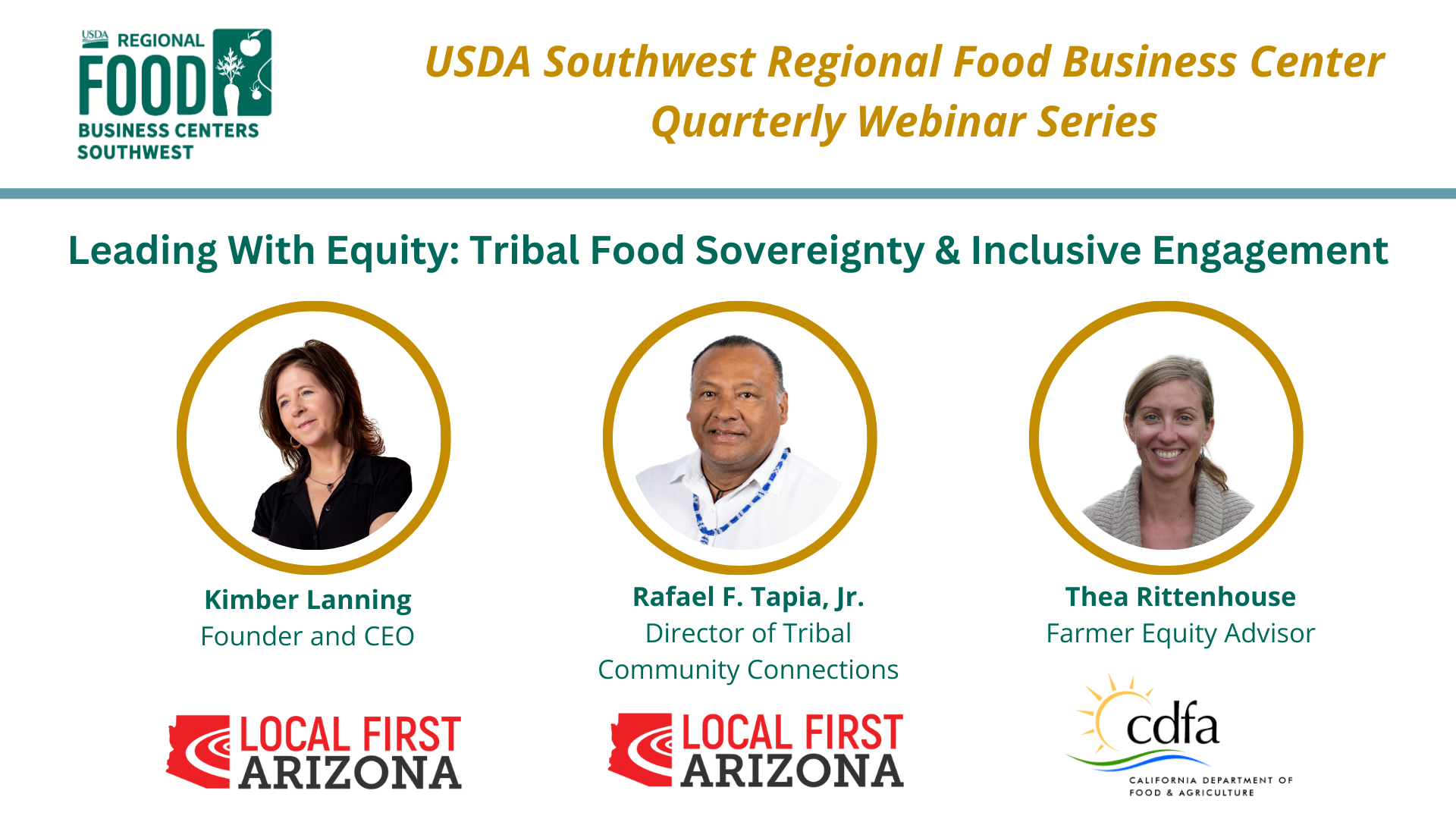
On July 17th, the USDA Southwest Regional Food Business Center hosted an informative webinar titled “Leading With Equity: Tribal Food Sovereignty & Inclusive Engagement.” This event featured Center partners, including the California Department of Food and Agriculture (CDFA) and Local First Arizona. Speakers Kimber Lanning and Rafael F. Tapia, Jr., of Local First Arizona, and Thea Rittenhouse of CDFA, discussed equity-centered initiatives and strategies to bolster food sovereignty for Tribal Nations and other underinvested communities. The webinar is part of the Center’s quarterly webinar series, where Center partners share best practices and innovative projects on essential topics related to business development and capacity assistance for local producers, farmers, and ranchers.
Over 60 participants from across the nation attended the webinar, including representatives from other USDA Regional Food Business Centers. Attendees were actively engaged throughout the webinar and speakers were able to address dozens of questions throughout the session.
One of the key takeaways from the webinar was the emphasis on food security, traditional food practices, sovereignty, and self-determination. Speakers discussed best practices for incorporating Indigenous knowledge and highlighted the unintended consequences of policies and funding that do not consider Tribal interests or approaches. They suggested pathways to build communication, develop partnerships, and establish trust. Additionally, the speakers addressed the critical infrastructure needed for Tribal communities, such as new wells, aggregating and distributing facilities, food-to-market distribution, and technical assistance, including business and market development skills.
The next webinar will take place on October 16th.
About Valley Vision and the Southwest Regional Food Business Center
Valley Vision leads coordination, communication, and network development efforts for the Southwest Regional Food Business Center. The quarterly webinar series is part of Valley Vision’s efforts to share best practices and to foster a collaborative network among Center partners and other participants.
The Southwest Regional Food Business Center, representing Arizona, California, Nevada, and Utah, is one of twelve USDA Regional Food Business Centers nationwide developed in 2023 to provide coordination, technical assistance, and capacity building to help farmers, ranchers, and other food businesses access new markets and initiatives, as well as navigate federal, state and local funding and resources. With an extensive network of partners from academic, government, and community-based organizations, the Southwest RFBC is dedicated to prioritizing historically underrepresented communities and small to mid-tier businesses.
For more information about the USDA Southwest Regional Food Business Center and its initiatives, visit www.swfoodbiz.org. To stay updated on future webinars and events, be sure to subscribe to the Center’s newsletter: http://bit.ly/SWRFBC-Newsletter.
USDA disclosures and guidance can be found at https://bit.ly/USDAdisclosures.
Visit the Center’s socials here.
Transforming Food Systems Across the Southwest Region
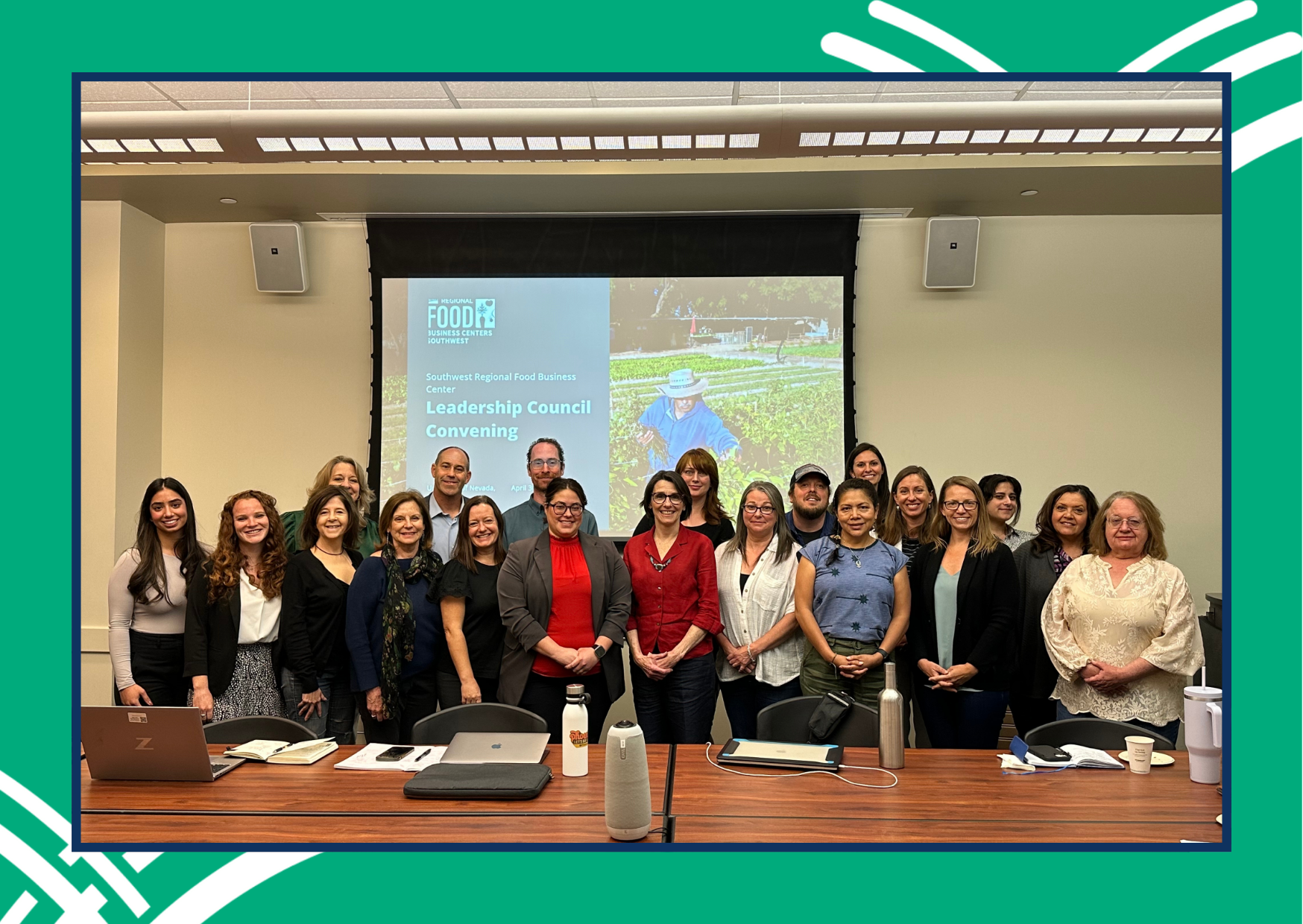
At the beginning of May, leadership of the USDA Southwest Regional Food Business Center convened in Reno, Nevada, providing the opportunity to further advance the Center’s mission, objectives, and programmatic activities, as well as share insights and best practices across emerging opportunities for food system transformation.
During the two-day convening, hosted by the University of Nevada, Reno (UNR), leadership representing the Southwest Region (Arizona, California, Nevada, and Utah) discussed the unique assets, needs, and activities within each state, and solidified the Center’s workplan. Day one featured collaborative working sessions oriented towards internal Center values, capacity, and timeline, as well as a tour hosted by the UNR Desert Farming Initiative (DFI), showcasing climate-smart crops and farming practices, local food-to-market successes, and active research initiatives.
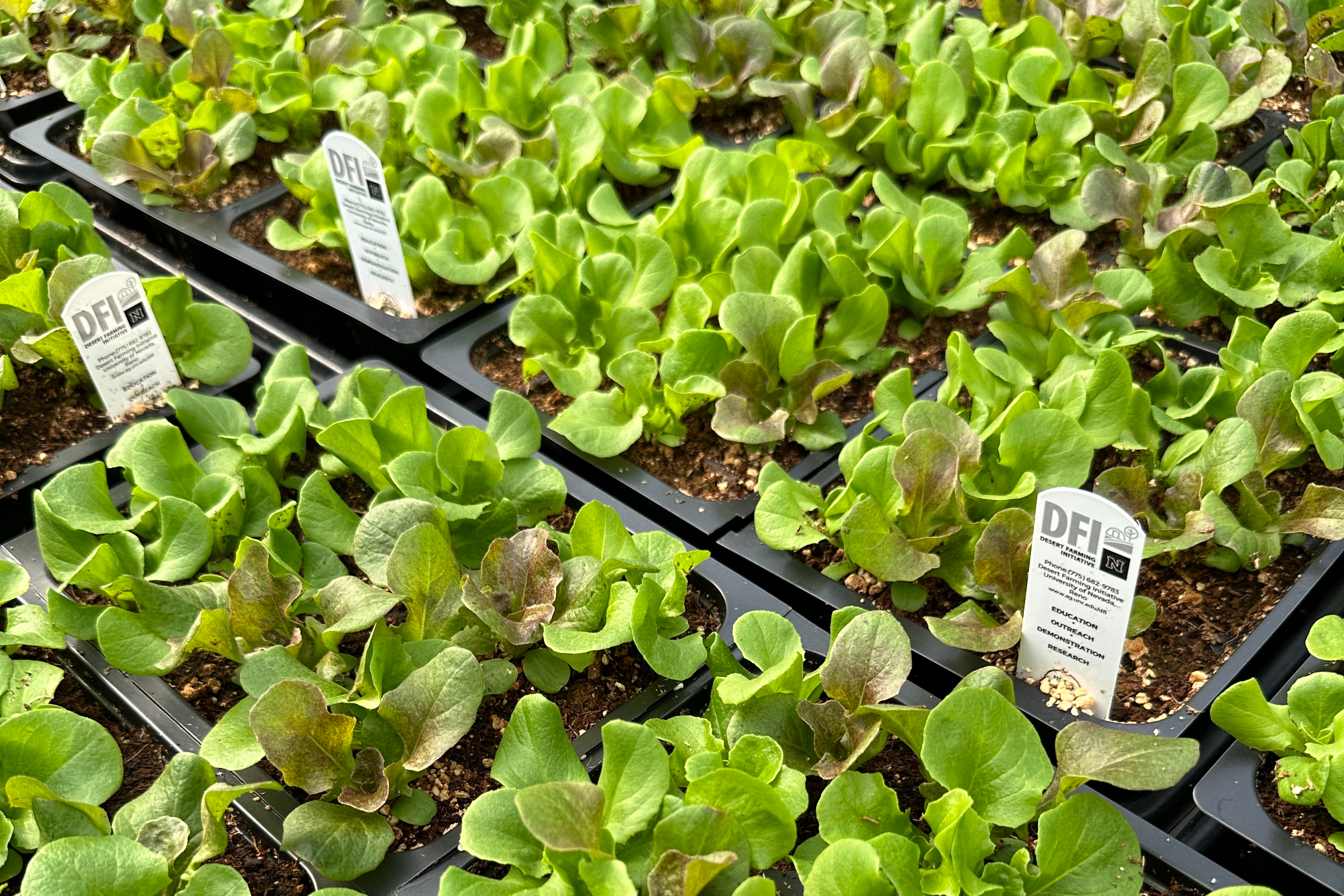
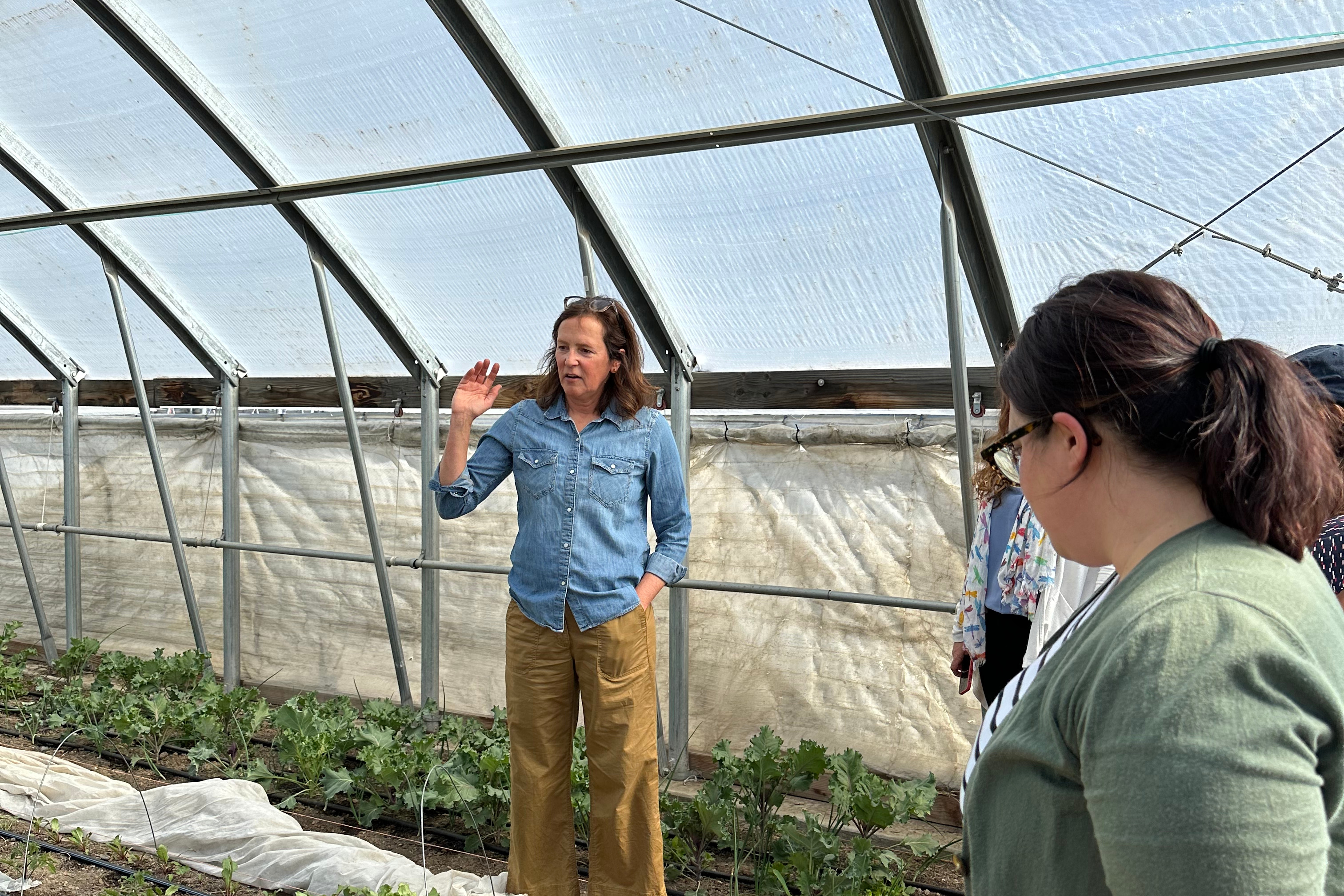
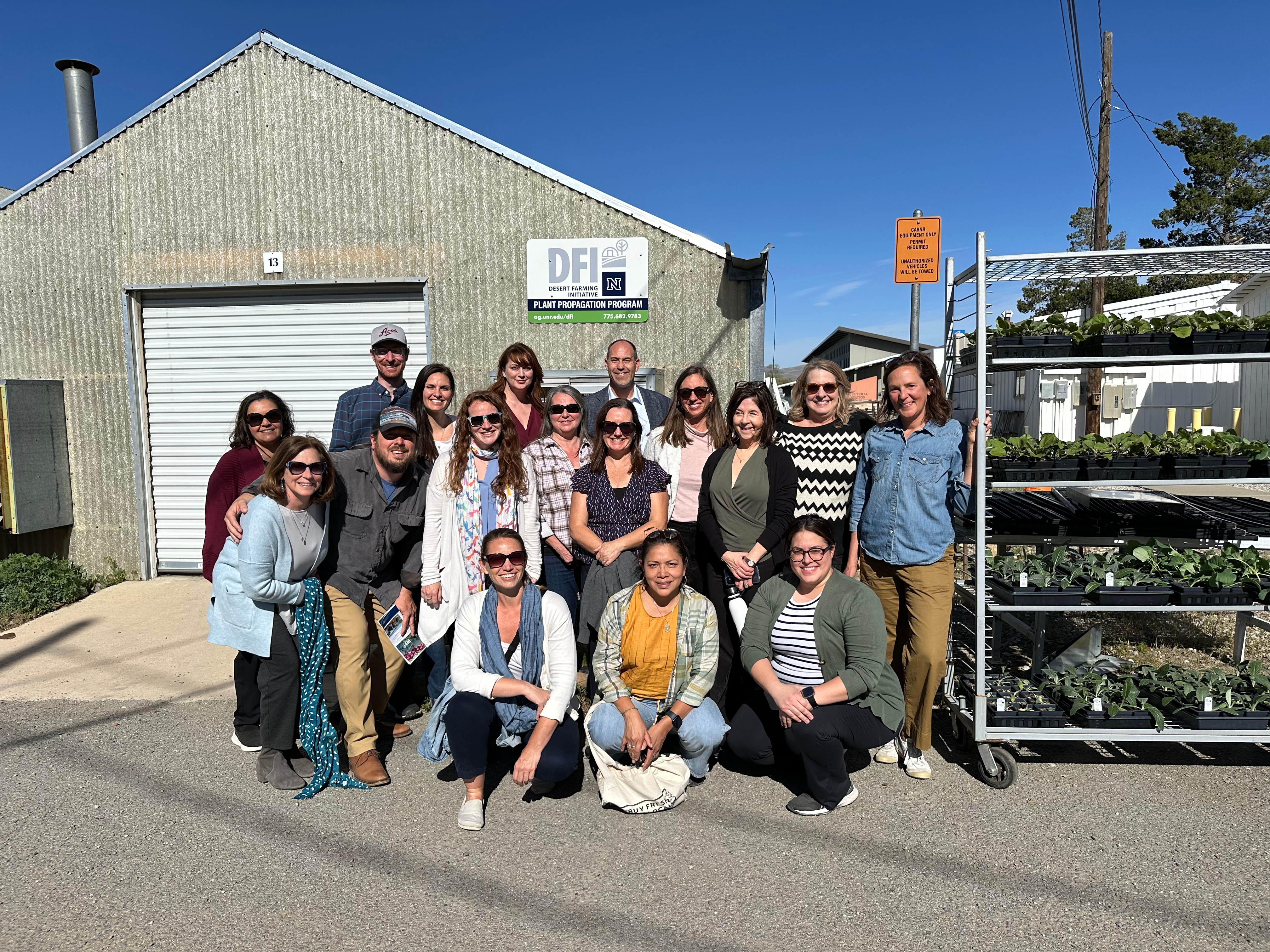
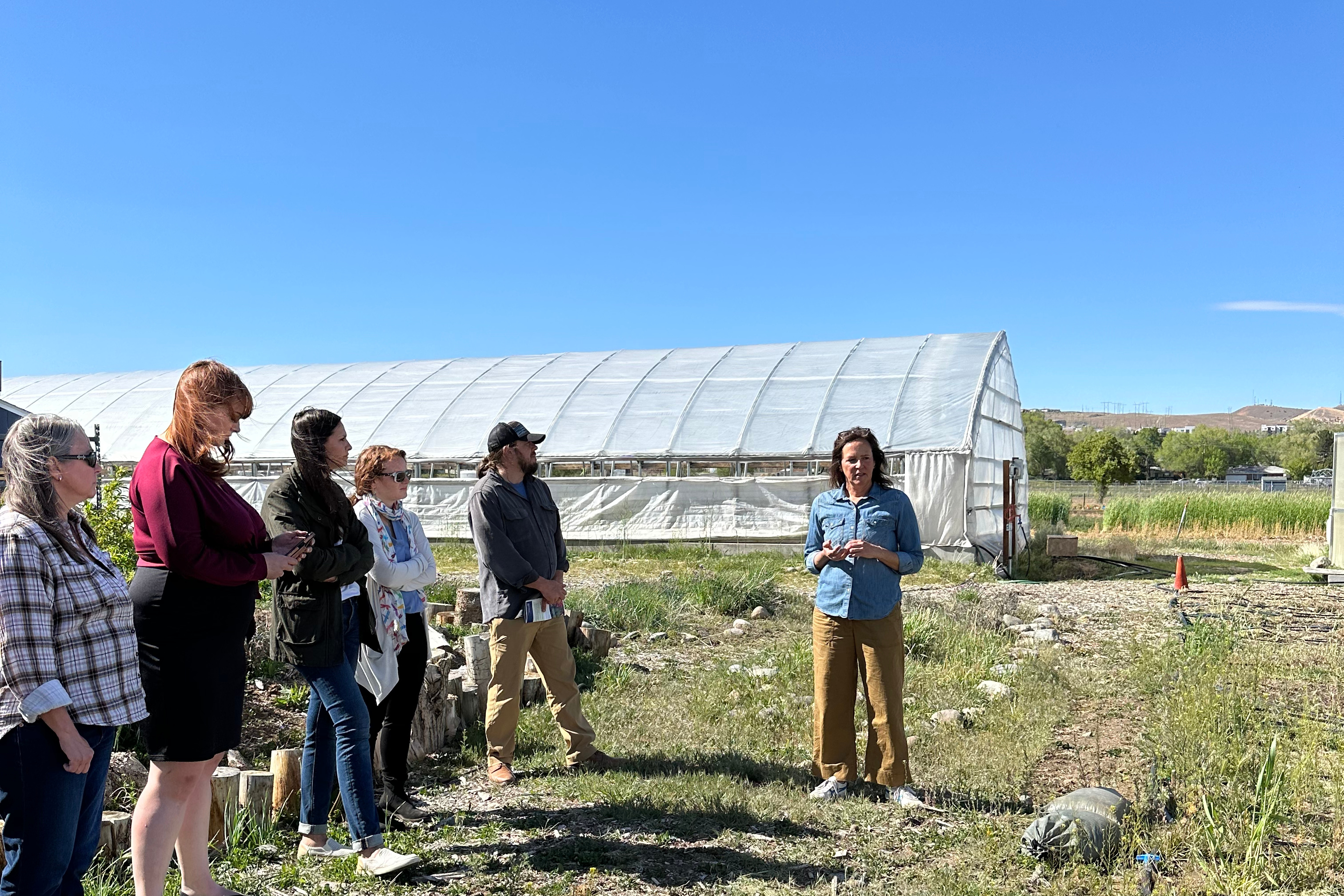
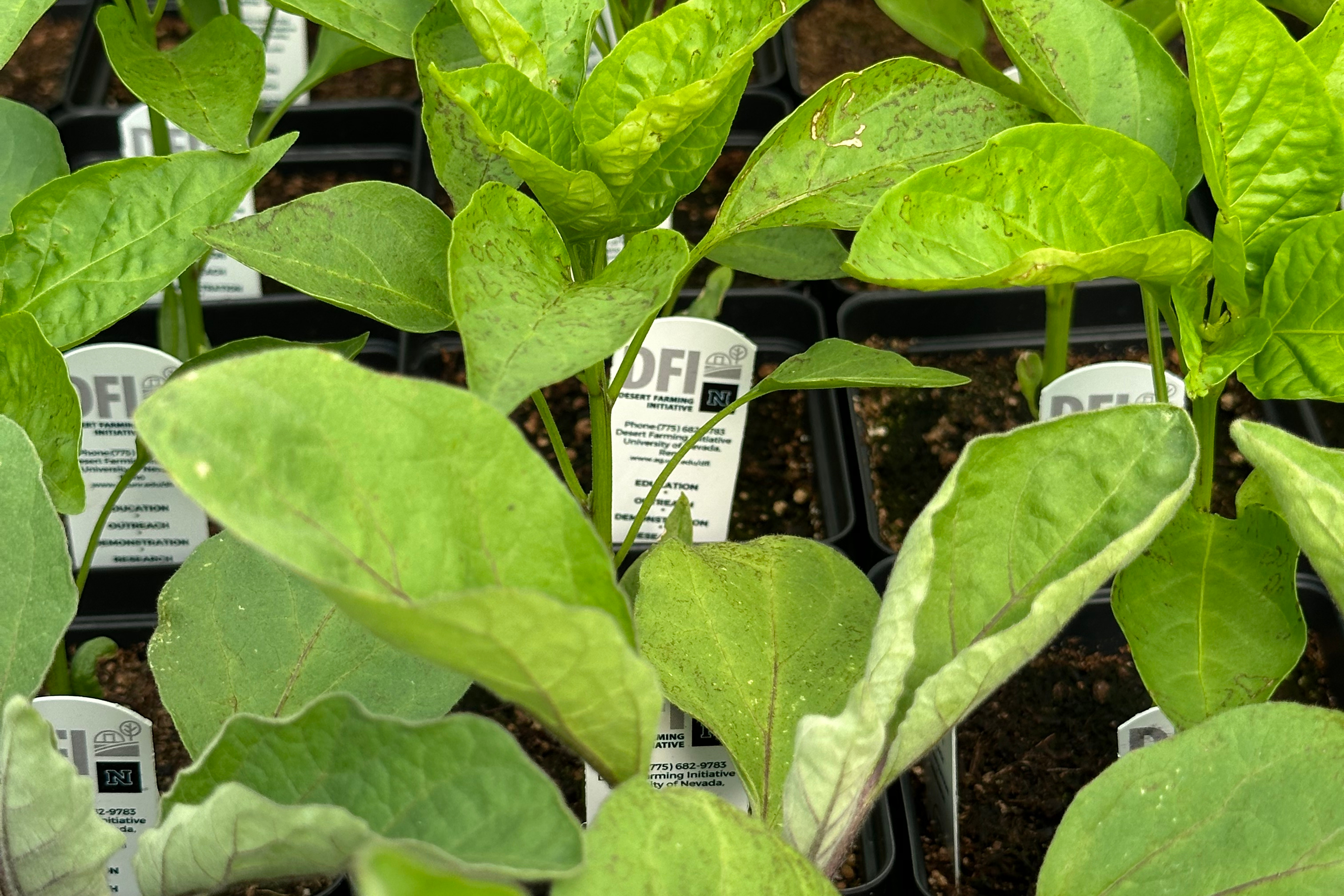
USDA Marketing and Regulatory Programs Senior Advisor, Kate Fitzgerald, joined Day 2 for an interactive brainstorming session regarding opportunities for collaboration between the USDA and the 12 Regional Food Business Centers nationally. Leadership from each state also provided teach-ins across emerging opportunities, such as equity in technical assistance, market access structures such as institutional procurement and food hubs, and microloan funding development.
This gathering provided Center Leadership with solutions, insight, and connections to drive the Center forward in its mission to transform the region’s food system through investment in small and mid-sized food and farm businesses by providing coordination, technical assistance, and capacity-building for the Southwest Region.
About the Center:
The Southwest Regional Food Business Center is a five-year $35 million program funded by the USDA Regional Food Business Centers Program, connecting Food and Agriculture Initiatives across Arizona, California, Nevada, and Utah. As part of the network of USDA Regional Food Business Centers, the Southwest Center is a hub for the region’s small and mid-tier food and farm businesses and local and regional food sector development initiatives.
In collaboration with University of California Agriculture and Natural Resources (UC ANR), Valley Vision supports the Center as part of the Center Management Team, leading communications, partnership development and programmatic operations.
Subscribe to the Center’s Quarterly Newsletter here.
Visit the Center’s socials here.
West Coast’s Young Leaders Visit Farm-to-Fork Capital
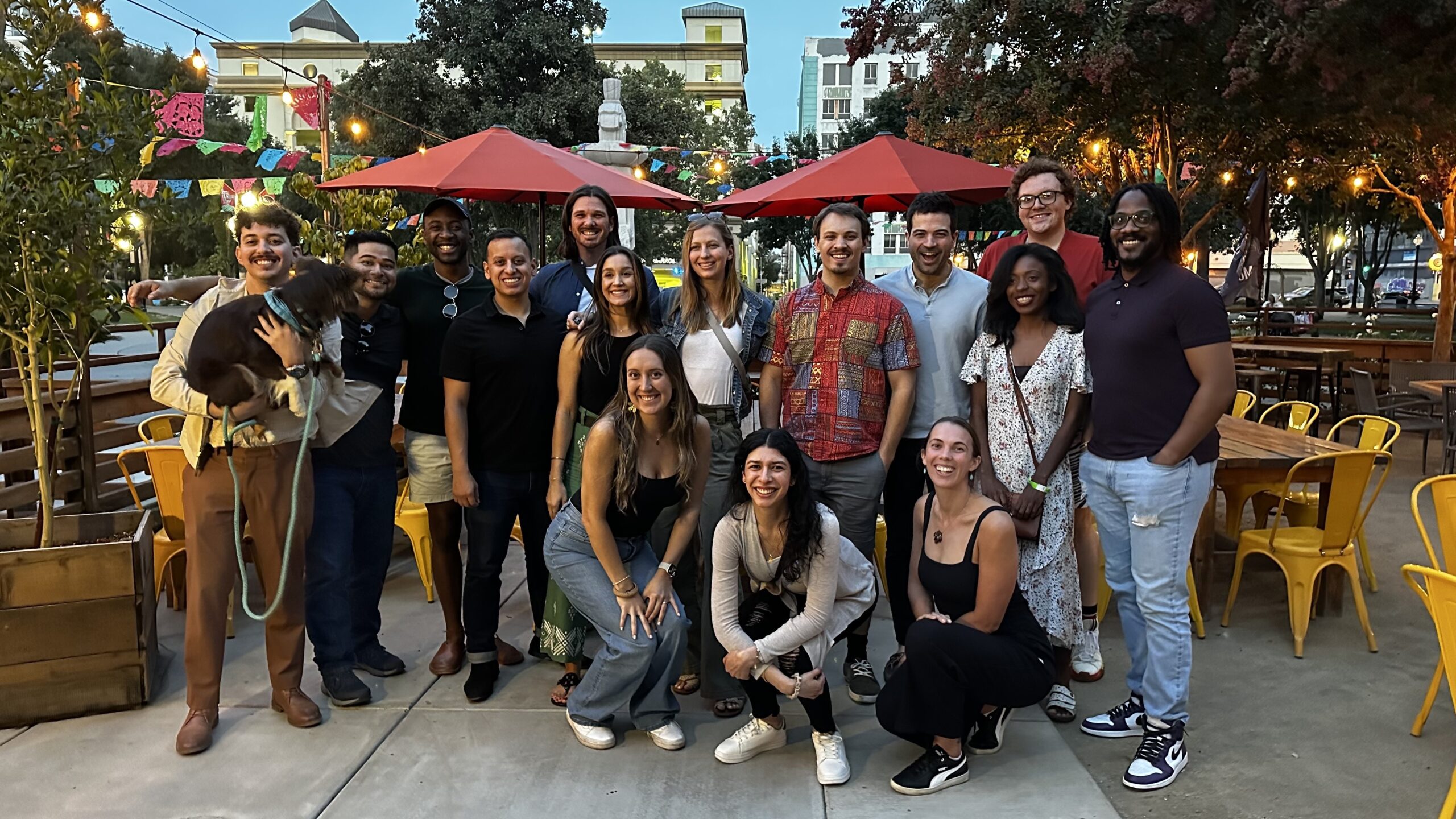
Flashback to Project Leader Adrian Rehn’s blog from five years ago: “Our team looks forward to harnessing this momentum, expanding our community partnerships, and doing another mind-blowing thing in the not-too-distant future.”
Five years and one pandemic later, the Sacramento Hub of the Global Shapers – the youth leadership network of the World Economic Forum – has done it again! From September 22-24th, Sacramento Hub members hosted young leaders from San Francisco, Oakland, and Phoenix for a weekend full of connection, impactful dialogue, and challenging preconceived notions while showcasing the best of Sacramento’s arts and culture.
Valley Vision has been the fiscal agent for the Global Shapers – Sacramento Hub for several years. Through this formal partnership, the Sacramento Hub has access to a high-performing and trusted local nonprofit that manages its finances and records, keeping things running smoothly. For Valley Vision, the Global Shapers bring a unique connection to the global community not found in other young leaders groups, which further boosts VV’s toolset in advancing the livability of the Sacramento region.
Sacramento: More than Just a Capital
The 2023 Global Shapers West Coast Retreat, as it was billed, was a revelation for many in that it shattered preconceived notions about Sacramento. While often seen only as just the capital of California, Sacramento proved to be much more. As Amy Vatcha, a San Francisco Global Shaper, put it:
“From the innovations in indoor farming & microgreens, to the art walks/art exhibitions/murals, to the salsa and bachata night at Dance on the Edge on the waterfront, I experienced the depth and variety of what Sacramento has to offer.”
Members of the Sacramento Hub were encouraged to shape the retreat based on their own connections to the city and their interests, including but not limited to:
- Guided tours of Sacramento’s many murals and art installations
- A private tour of the California State Capitol building
- A meet-and-greet with local urban agriculture leaders and entrepreneurs
- Salsa dancing lessons on the Old Sacramento Waterfront
- Leadership development sessions and cross-Hub skill-building
Connecting Young Leaders Beyond Boundaries
Beyond its role in showcasing Sacramento’s vibrant culture, the retreat emphasized the importance of connecting young leaders outside of their existing networks to think globally, and act locally. Adam Shipley, the Phoenix Hub’s curator, noted:
“Understanding perspectives across industries, demographics, and geographies helps us all create and maximize our community impact. [The] Sacramento Hub took the first proactive step in launching new dialogues.”
With this emphasis, the retreat underscored the significance of breaking down barriers and fostering a more holistic understanding of the challenges and opportunities facing our communities. It demonstrated that when young leaders unite with open hearts and minds, they can collectively address pressing issues and create a more interconnected, prosperous world.
Authentic Fellowship and Community Connection
Throughout the retreat, Shapers experienced the commitment to authenticity that has made the Sacramento Hub a long-lasting group. As Raphaël Tshitoko, San Francisco’s Vice Curator, put it:
“I can see how they’ve carefully nurtured their connection within their Hub, leading to genuine enjoyment of each other’s company, to how they’ve nurtured their connection to their community, intentionally creating spaces of togetherness but also being connectors by associating with and supporting leadership in their own neighborhood.”
Sacramento Hub members emphasized the importance of deep camaraderie rooted in shared values and experiences, where members actively nurture relationships within their group while also engaging passionately with their local community. This authentic bond goes beyond networking, fostering lasting connections and a sense of trust, unity, and shared purpose among its members.
Ultimately, the West Coast Retreat was a resounding success, leaving participants feeling optimistic and energized for their future involvement with their communities. The Sacramento Hub could not have pulled off this production without the help of our fantastic sponsors: Balanced Body, UC Davis Graduate School of Management, Councilmember Karina Talamantes, Revolution Winery, and our longstanding fiscal agent, Valley Vision.
To keep up with Valley Vision’s work to advance livability in the Sacramento region, subscribe to our Vantage Point email newsletter!
Valley Vision to Support New USDA Regional Food Business Center
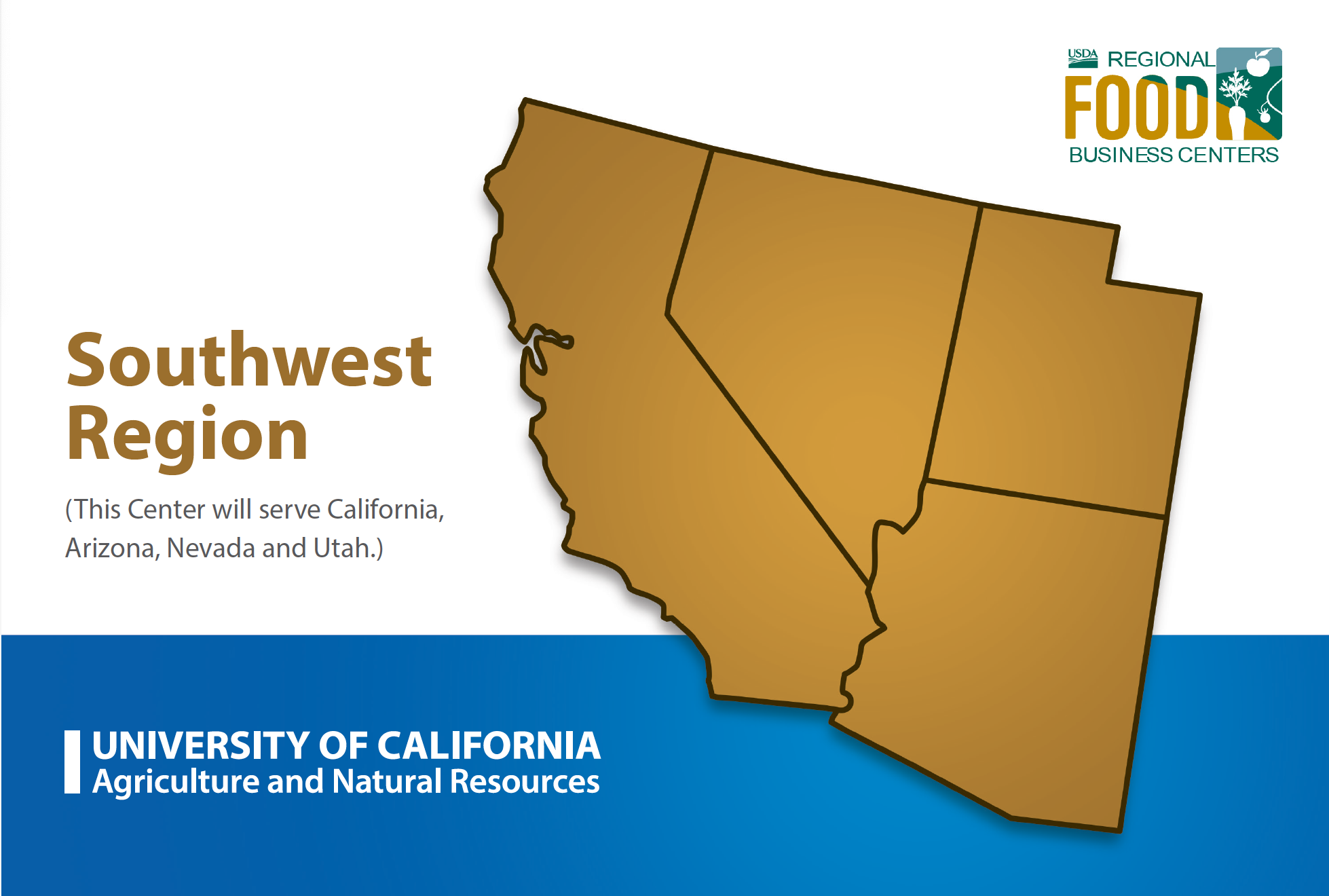
As announced earlier this month, Valley Vision is proud to be part of the new USDA Southwest Regional Food Business Center—one of 12 new Centers across the country that will support a more resilient, diverse, and competitive food system by providing assistance to strengthen local and regional supply chains. The University of California Agriculture and Natural Resources (UC ANR) is the lead applicant for the Center, and Valley Vision will serve as the Hub Director.
“The Regional Food Business Centers, along with investments through the Resilient Food Systems Infrastructure Program, will create new and expanded local market opportunities which will improve farm income, create good paying jobs and build greater resilience in our overall food system,” said Agriculture Secretary Tom Vilsack.
The Southwest Center covers California, Nevada, Arizona, and Utah. Tribal nations and Colonias Communities along the Southern border are also included. Through its network of partner organizations, the Southwest Center will conduct place-based technical assistance and capacity-building across this four-state region. The goal of the Center is to build a ‘coalition of coalitions’ that delivers multi-sector coordination efforts and business development programs to strengthen local producers’ economic viability, improve the supply chain’s resilience, and center equity in regional food systems.
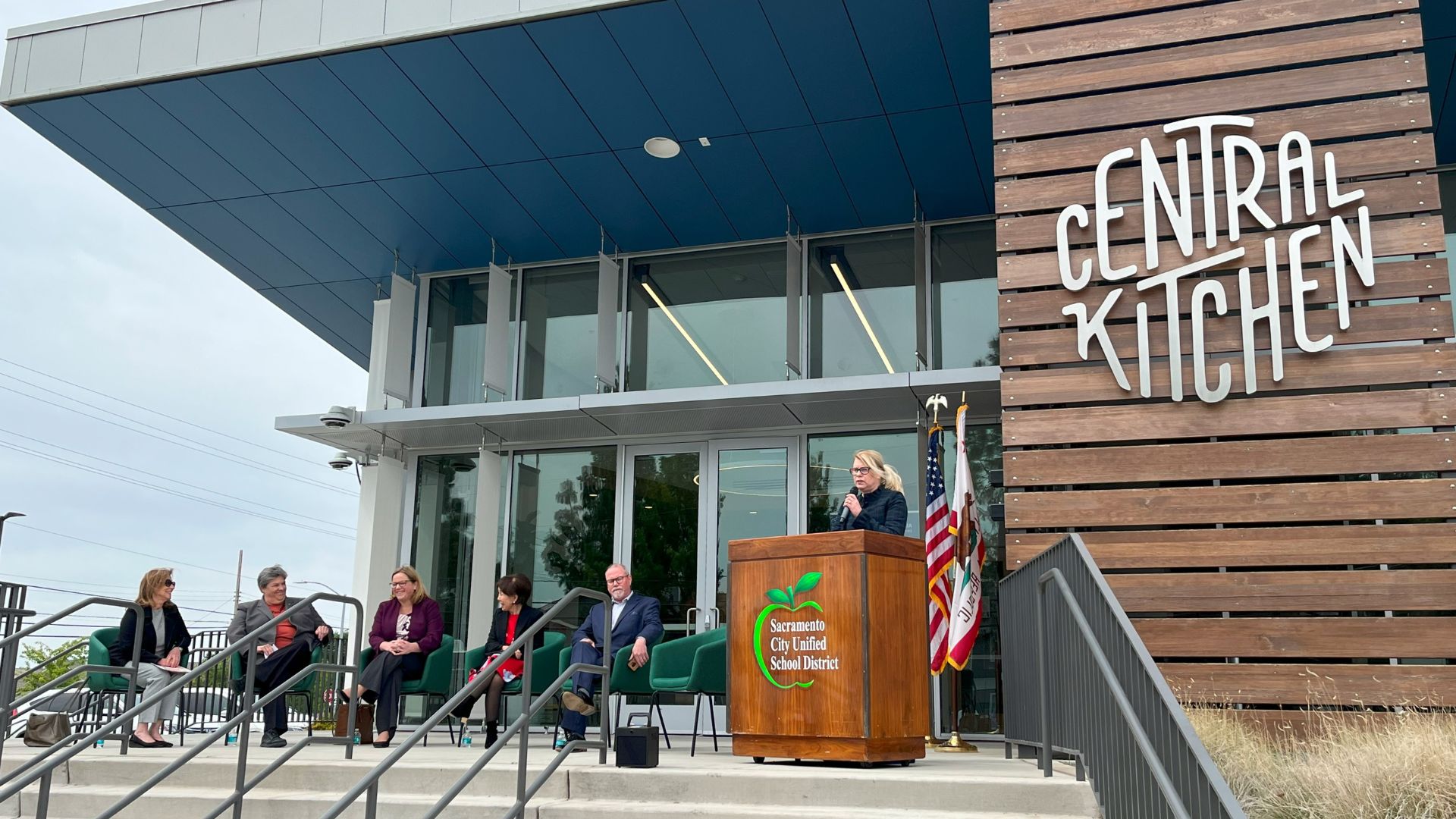
The Southwest Center was formally announced on May 3rd at Sacramento City Unified School District Central Kitchen. Valley Vision helped coordinate the event, which featured Jenny Lester Moffitt, Under Secretary of USDA Agricultural Marketing Service; Congresswoman Doris Matsui, (CA-7); Glenda Humiston, Vice President of UC Agriculture and Natural Resources; Sacramento Supervisor Patrick Kennedy and SACOG Board Chair; Diana Flores and Kelsey Nederveld from Sacramento City Unified Nutrition Services; and Trish Kelly, Managing Director, Valley Vision.
With local asparagus, potatoes, and grass-fed braised beef served out of the Central Kitchen’s Food Truck—showcasing how Fresh Food to School across the District is sourced from local farmers and prepared at the Central Kitchen—the event highlighted the strength of the local food system, including our diverse partnerships and networks that span across the Sacramento region, exemplifying the goals of the new Center.
The event concluded with a tour of the Central Kitchen, encompassing 50,000 SQ of warehouse space and 50,000 SQ of the facility itself. This tour was an opportunity to demonstrate the food system infrastructure we are building in this region, as well as the types of projects the Southwest Center will support.
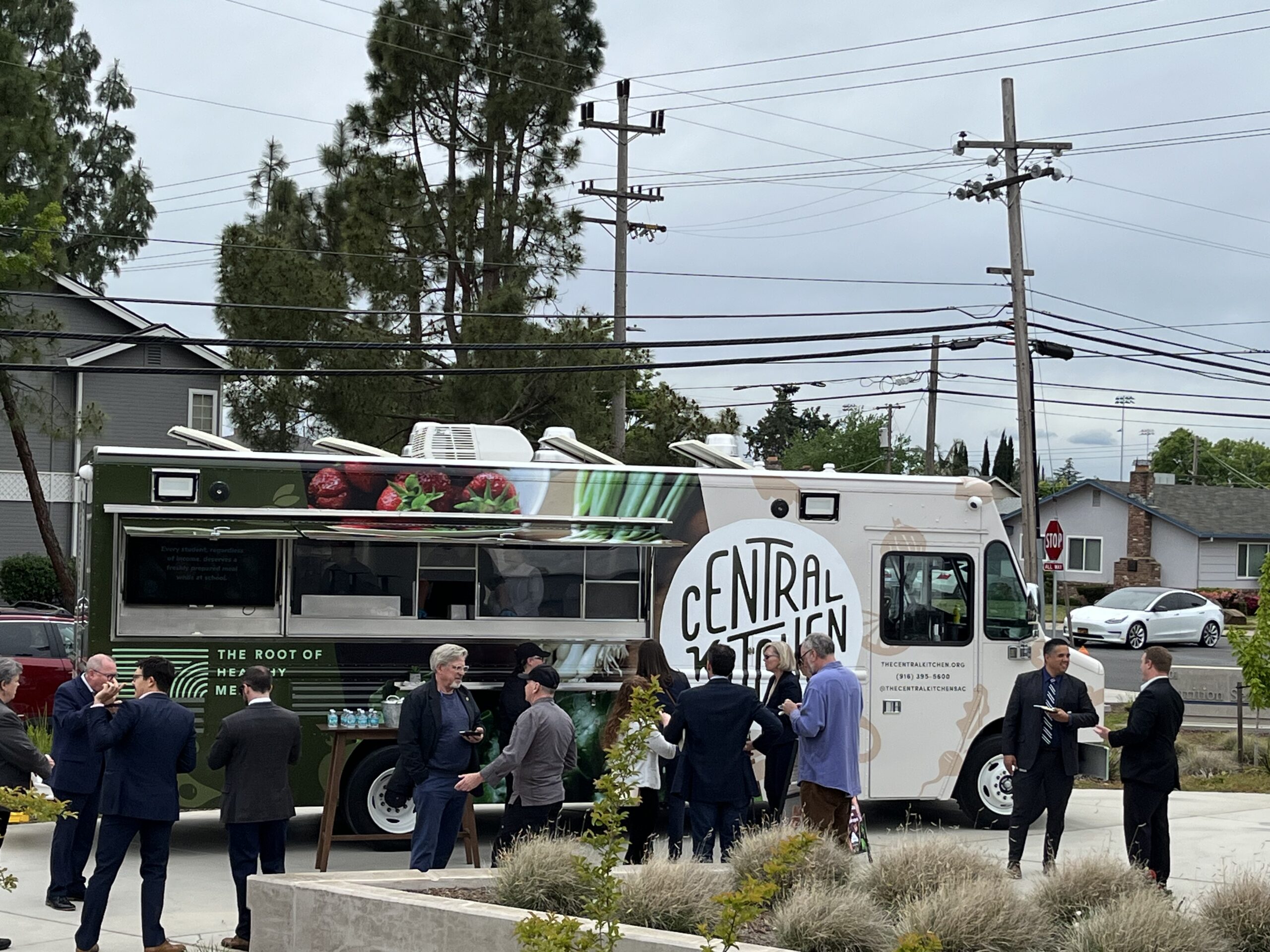
The Southwest Center and the Tour of the Central Kitchen would not be possible without the support of Secretary Moffitt, with whom we had the pleasure of meeting the week before during the 2023 Cap to Cap program; Congresswoman Matsui for being a champion for our region’s food system; Supervisor Kennedy, for his leadership that led to the development of the Central Kitchen; and Diana Flores and Kelsey Nederveld, who worked tirelessly to get the Central Kitchen operational. We are extremely grateful for the leadership of Glenda Humiston and her team in supporting diverse partners across the Southwest Region by anchoring the development and implementation of this project.
Trish Kelly will serve as the Director for the Center, supporting network coordination for outreach activities across the four states, development of community partnerships, and knowledge sharing. Grace Kaufman will support Valley Vision’s efforts, including managing stakeholder engagement, strategic planning, network coordination, outreach activities, and resource-sharing across the Southwest region.
The USDA grant will encompass five years and will contribute to Valley Vision’s capacity to serve as a backbone for the Sacramento region’s food and agriculture system. The project is anticipated to begin this summer.
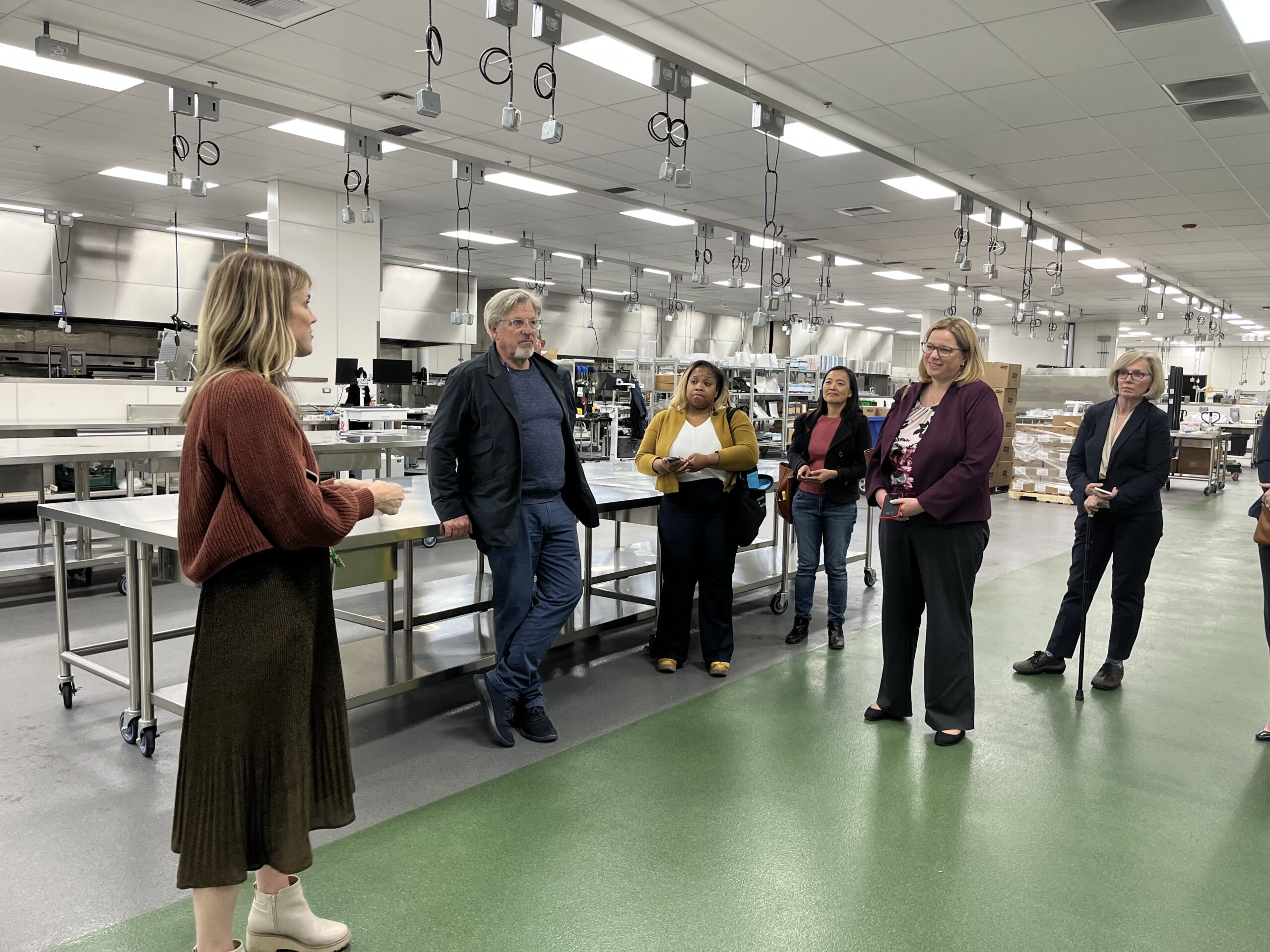
The Center’s network of Partners includes the California Department of Food and Agriculture (CDFA); California State University – Chico and Fresno; Occidental College; the Riverside Food System Alliance; the San Diego Food System Alliance; the University of California – Santa Cruz and Davis; Valley Vision; the Arizona Department of Agriculture; the Local First Arizona Foundation; the University of Arizona; the Nevada Department of Agriculture; the University of Nevada – Reno; the Utah Dept. of Agriculture; and Utah State University.
Center Collaborators include a wide network of organizations across the four states, including the Community Alliance with Family Farmers (CAFF); the Center for Good Food Purchasing; California FarmLink; Kitchen Table Advisors, Health Care Without Harm, and many others.
You can find more information about the program and the other Centers here: https://www.ams.usda.gov/services/local-regional/rfbcp.
To read more about the Sacramento Region’s food system projects and the work Valley Vision is supporting, go to WeAreFarmToFork.org.
If you’d like more information or to get involved with Valley Vision’s food and agriculture work, please contact us at FoodAndAg@ValleyVision.org.
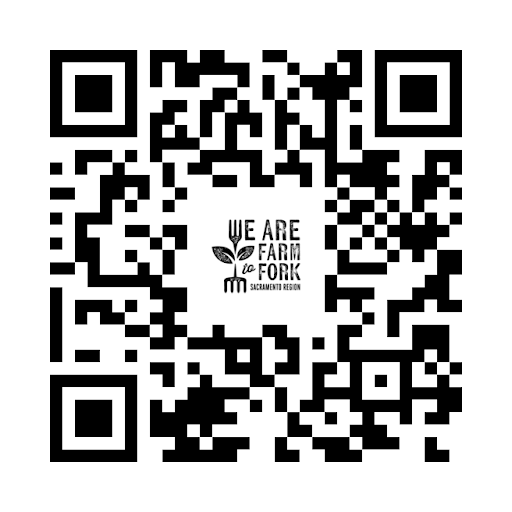
Recap: Yolo Food Hub Network’s Barn Warming & Celebration in Esparto, CA
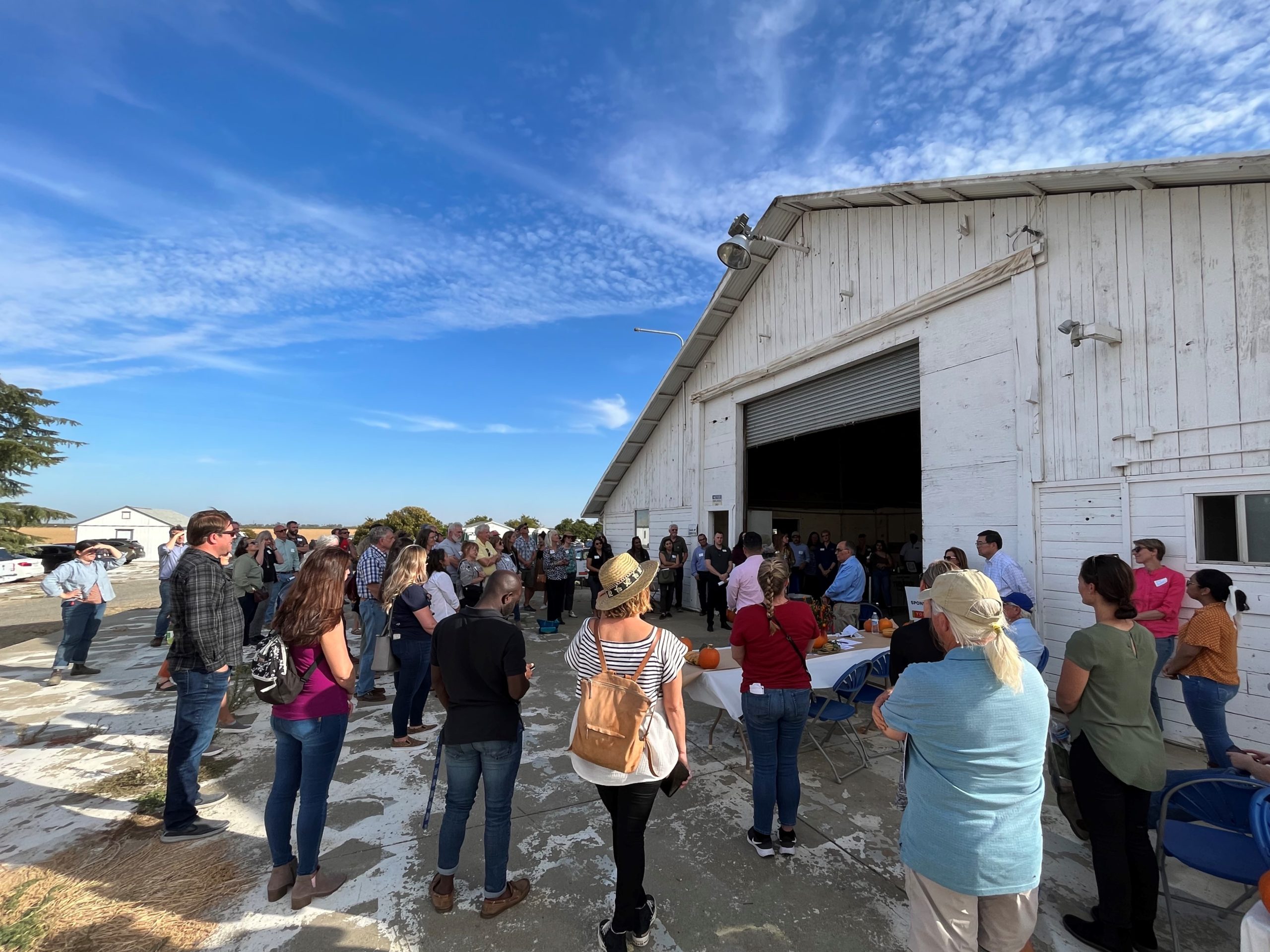
On Friday, October 21st, 2022 – a new home for food and agricultural infrastructure opened its doors to more than 115 people from across the region. The historic 22,000 square-foot Oakdale Barn, located in Esparto, California is over 100 years old, and as the anchor facility for the Yolo Food Hub Network, it will continue to serve the region’s agricultural industry. The Barn facility will be renovated to aggregate, process, store, package, and distribute produce grown in Yolo County and throughout the region. The facility will increase consumer and buyer access to healthy and diverse local foods, improve farmer and market sales, and will strengthen relationships between farmers, institutions, and local communities. It will open new markets for growers and food producers and will enable large institutions, such as hospitals, event centers, and schools to purchase locally grown foods. The barn warming, hosted by the Yolo Food Hub Network and Valley Vision, garnered the support of numerous organizations and representatives across Northern California.
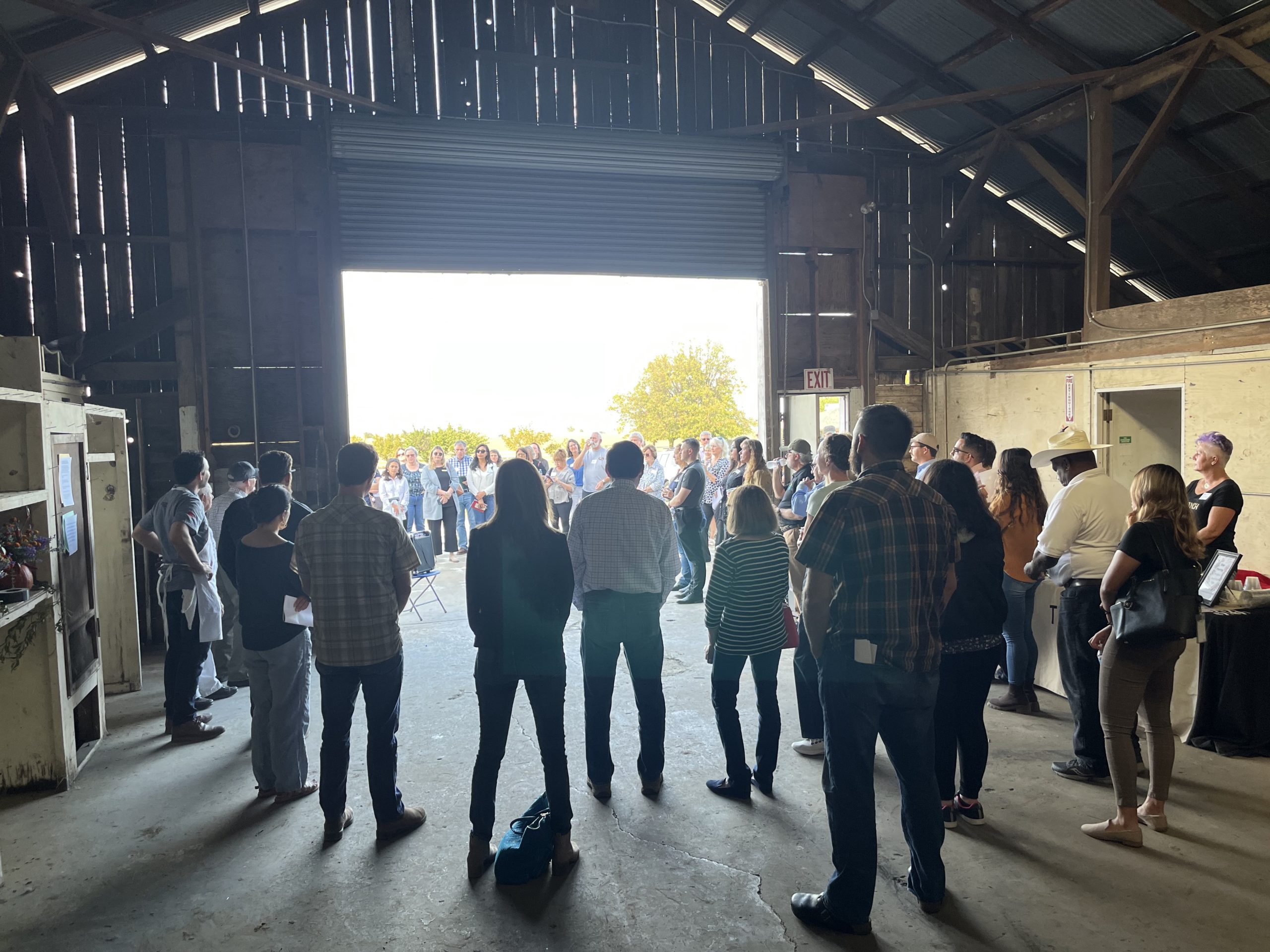
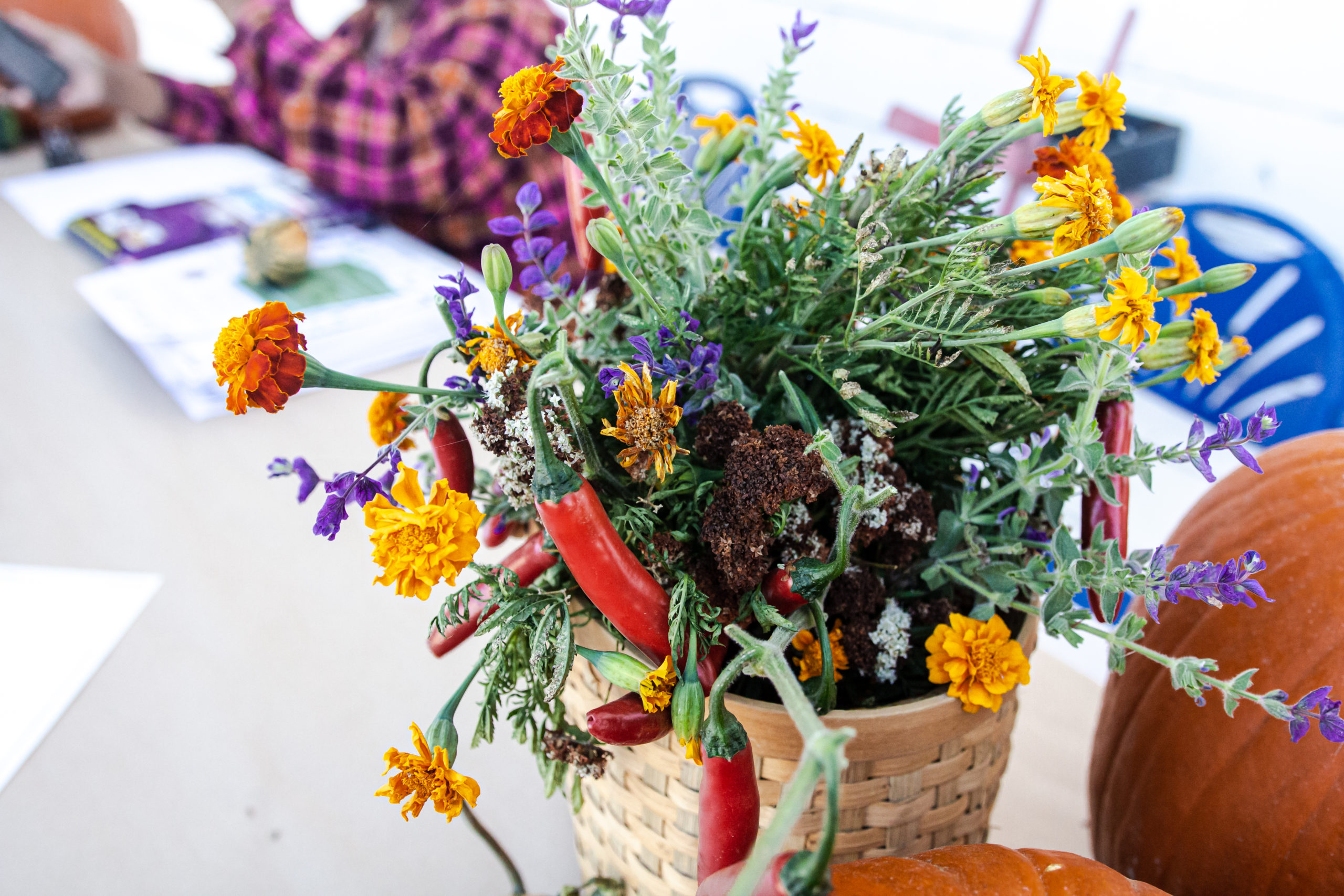
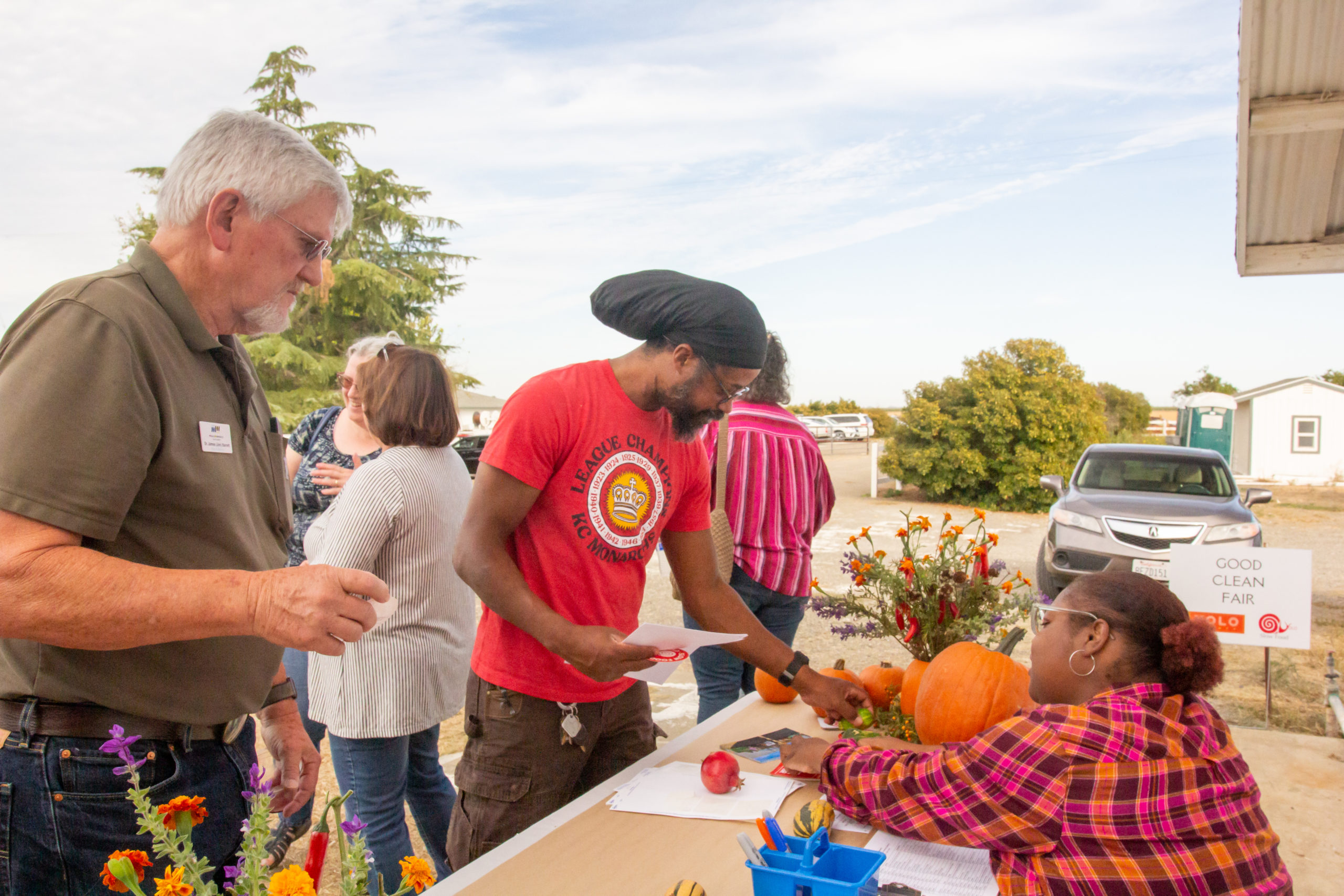
Valley Vision, on behalf of several local partners, was awarded a grant through the Local Food Promotion Program from USDA to support the planning phase of the project. Yolo County committed $2 million of American Rescue Plan funds for the site acquisition.
Food hubs help connect farmers and food entrepreneurs with regional markets and institutional buyers, such as schools, hospitals, and food banks, to access source-identified, locally-grown products. The project’s first phase developed recommendations and a funding strategy to help establish and sustain the new Yolo Food Hub Network and facility. As part of the planning phase of the Yolo Food Hub Network, the project will help farmers receive training on how to reach these institutional buyers, which will buy produce and goods from Yolo Food Hub Network partners.
The Yolo Food Hub Network project team includes New Season Community Development Corporation (NSCDC) – the project developer, Capay Valley Farm Shop (CVFS), Yolo Food Bank, Durst Organic Growers, Spork Food Hub, Esparto Train Station, Hatamiya Group, Kitchen Table Advisors, and Valley Vision as the project manager.
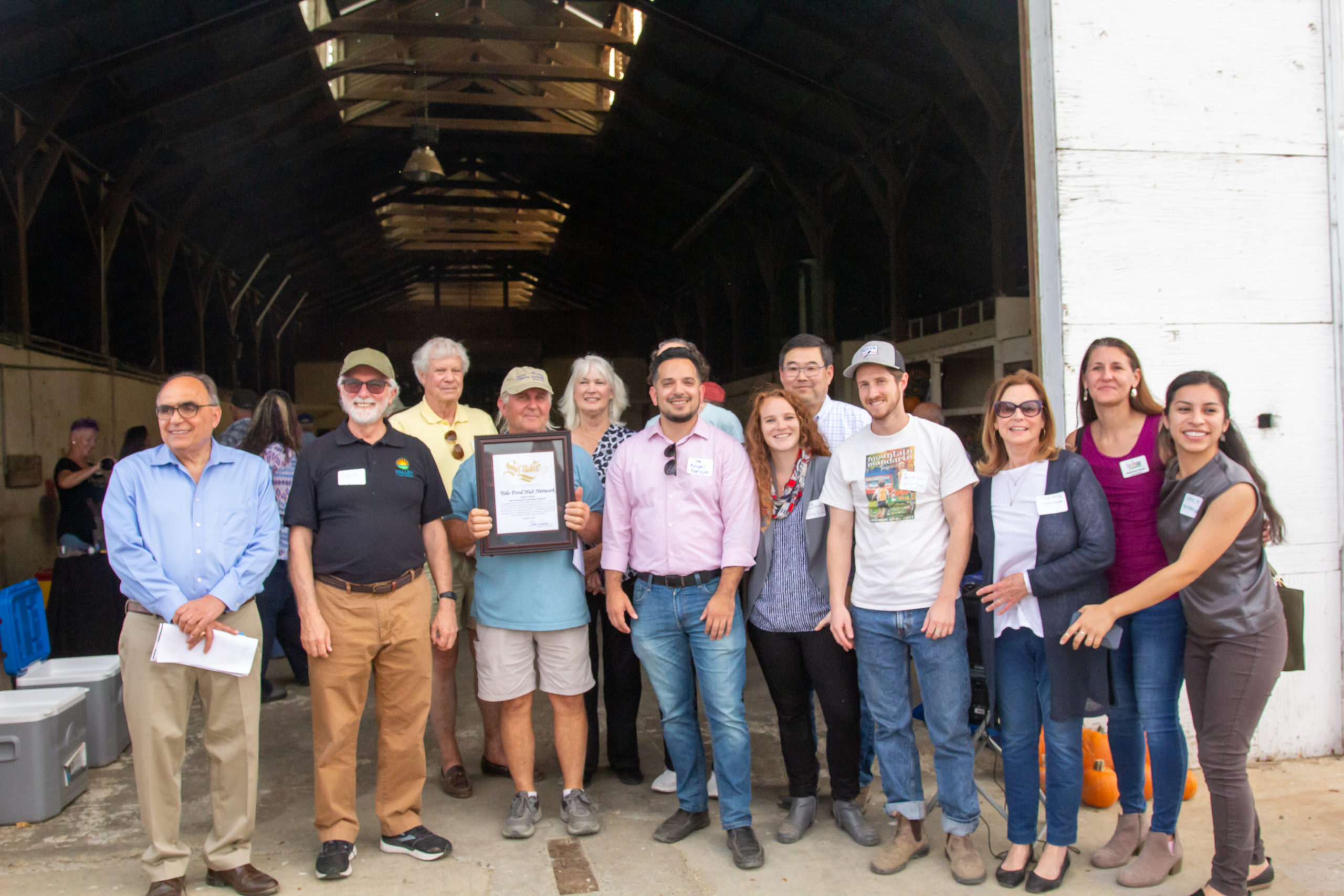
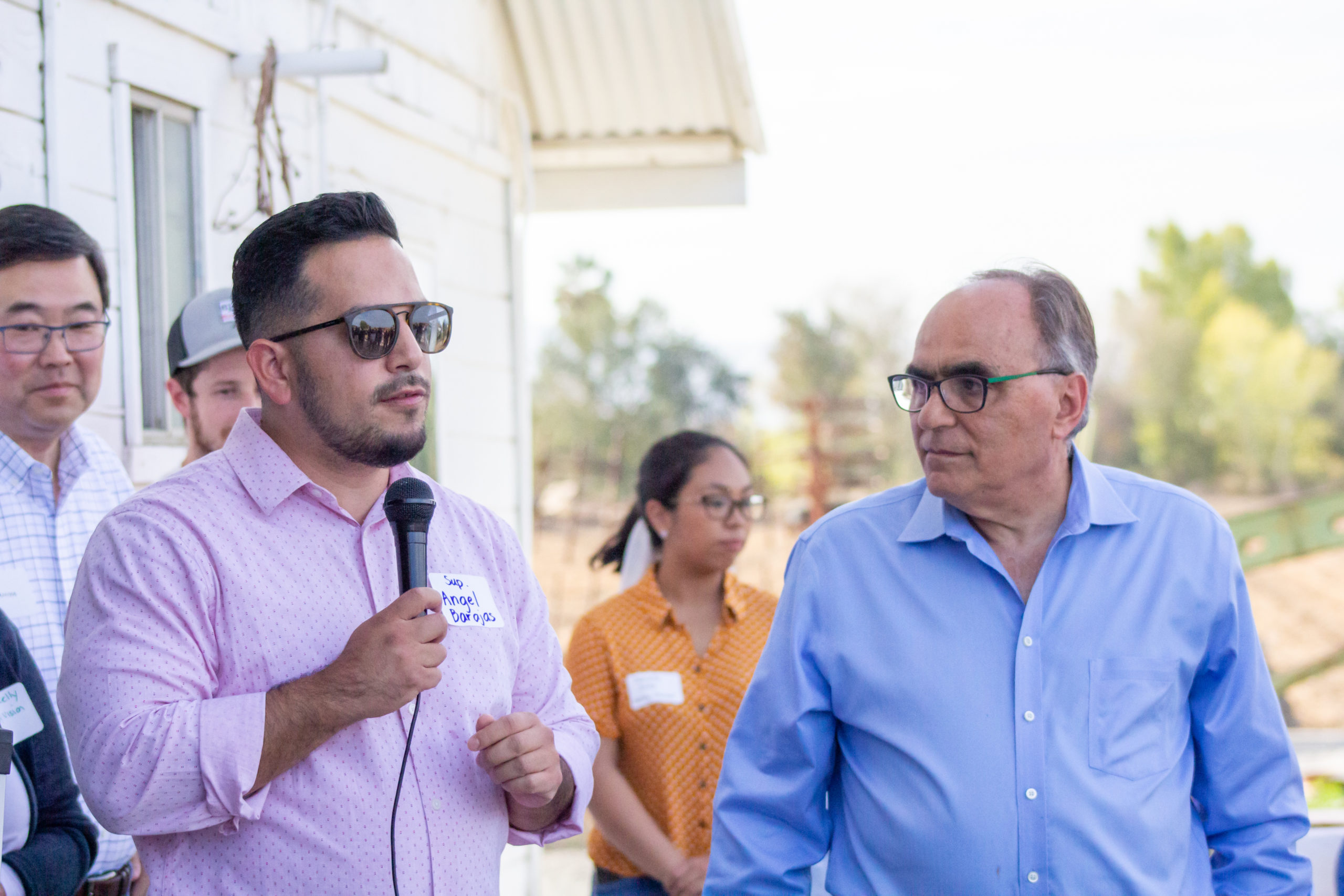
Many elected officials joined the celebration, including California Assemblymember Cecilia Aguiar-Curry District 4, California State Senator Dodd of Senate District 3, (Staff present), as well as Yolo County Supervisors Angel Barajas (Chair), Don Saylor, Jim Provenza, and Woodland City Council members Tom Stallard and Tania Garcia-Cadena.
Also in attendance was James Corless, Executive Director of the Sacramento Area Council of Governments (SACOG). Through SACOG’s Rural Urban Connection Strategy (RUCS), SACOG has supported the planning and feasibility of food hubs throughout the region, including the 2014 food hub feasibility analysis, which served as the foundation for the Yolo Food Hub Network.
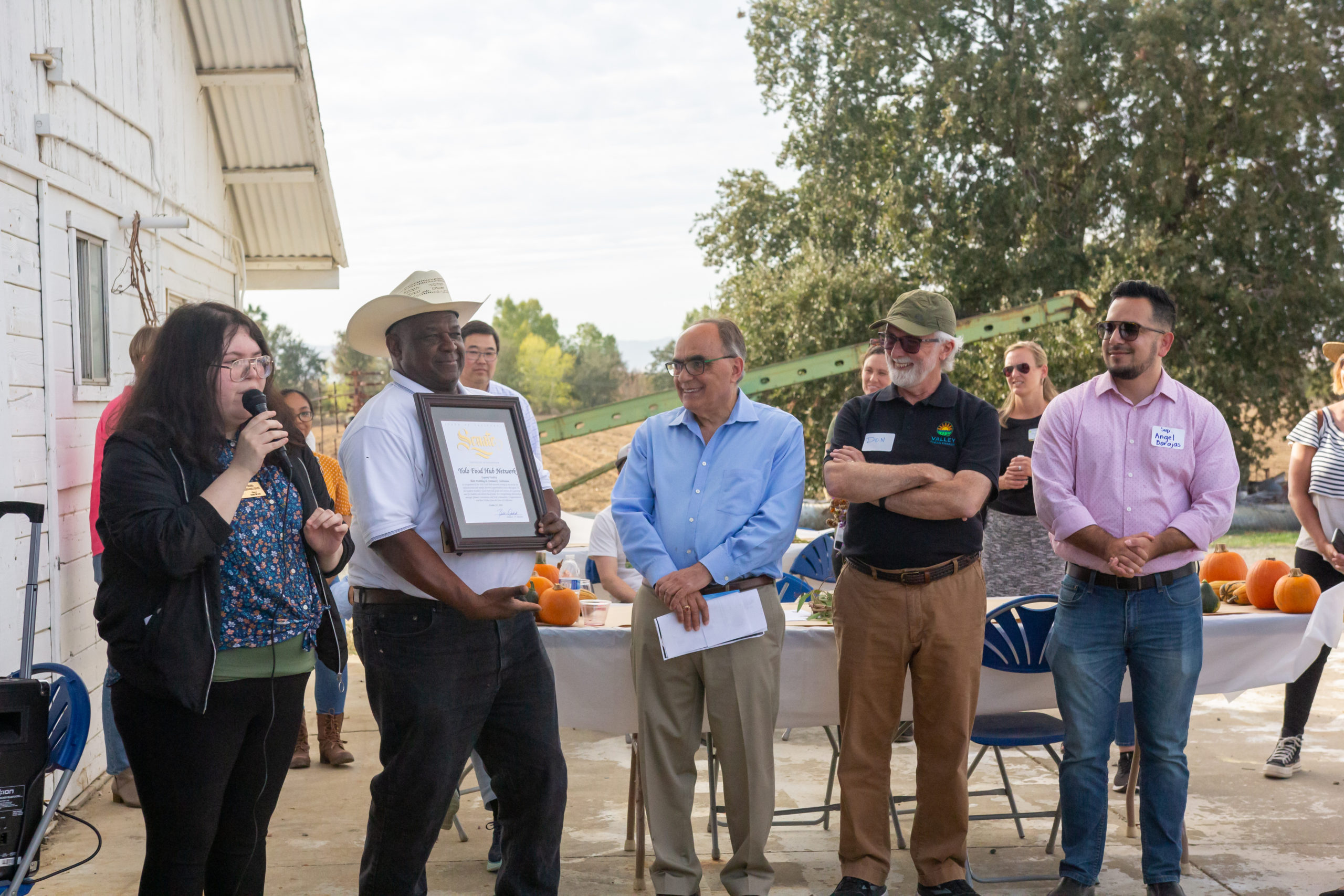
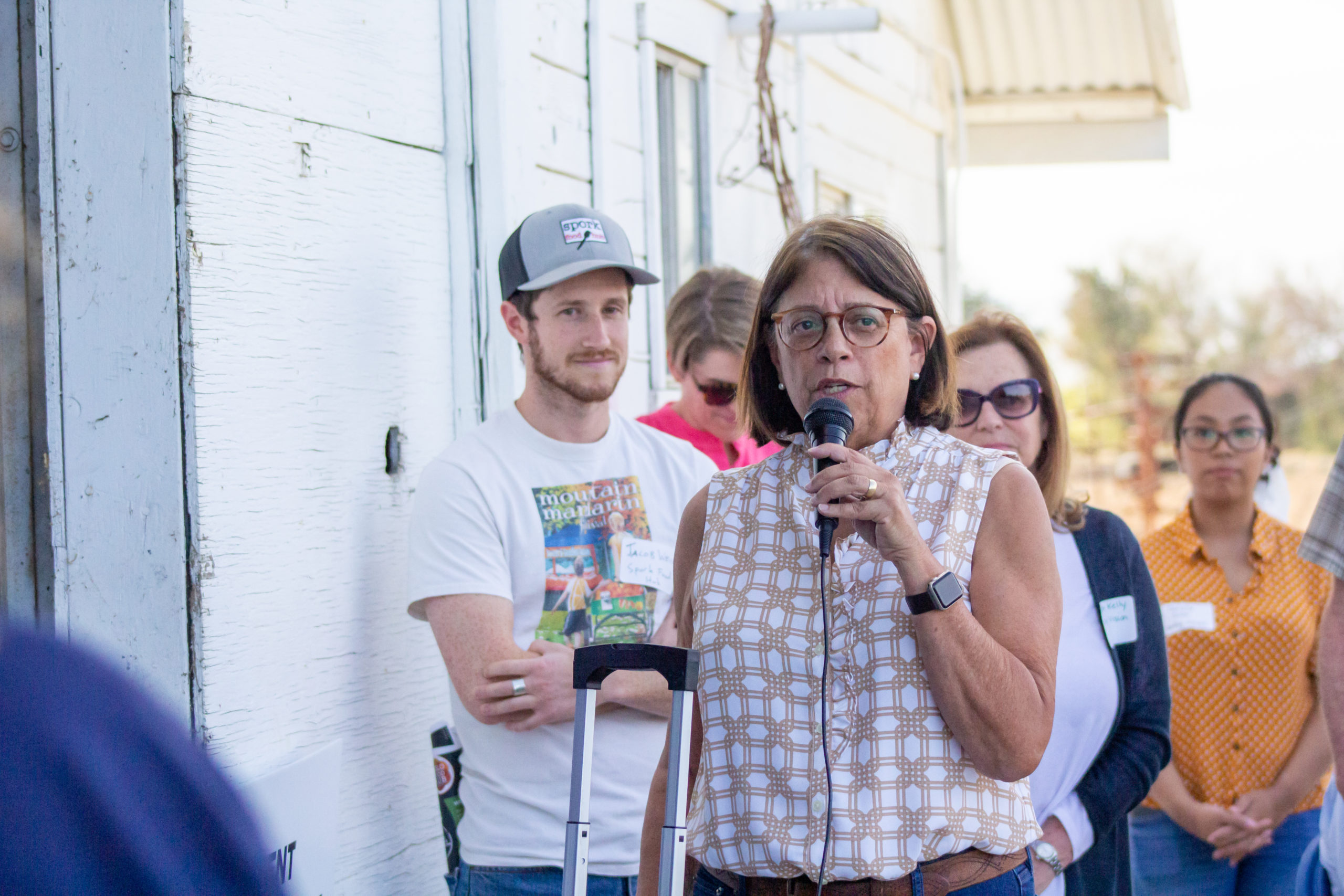
This event would not have been possible without the generous support of Slow Food Yolo, Turkovich Family Wines, and the hard work of Juan Barajas and his team. Slow Food is a global, grassroots organization, founded in 1989 to prevent the disappearance of local food, cultures, and traditions. Slow Food believes food is tied to many other aspects of life, including culture, politics, agriculture, and the environment.
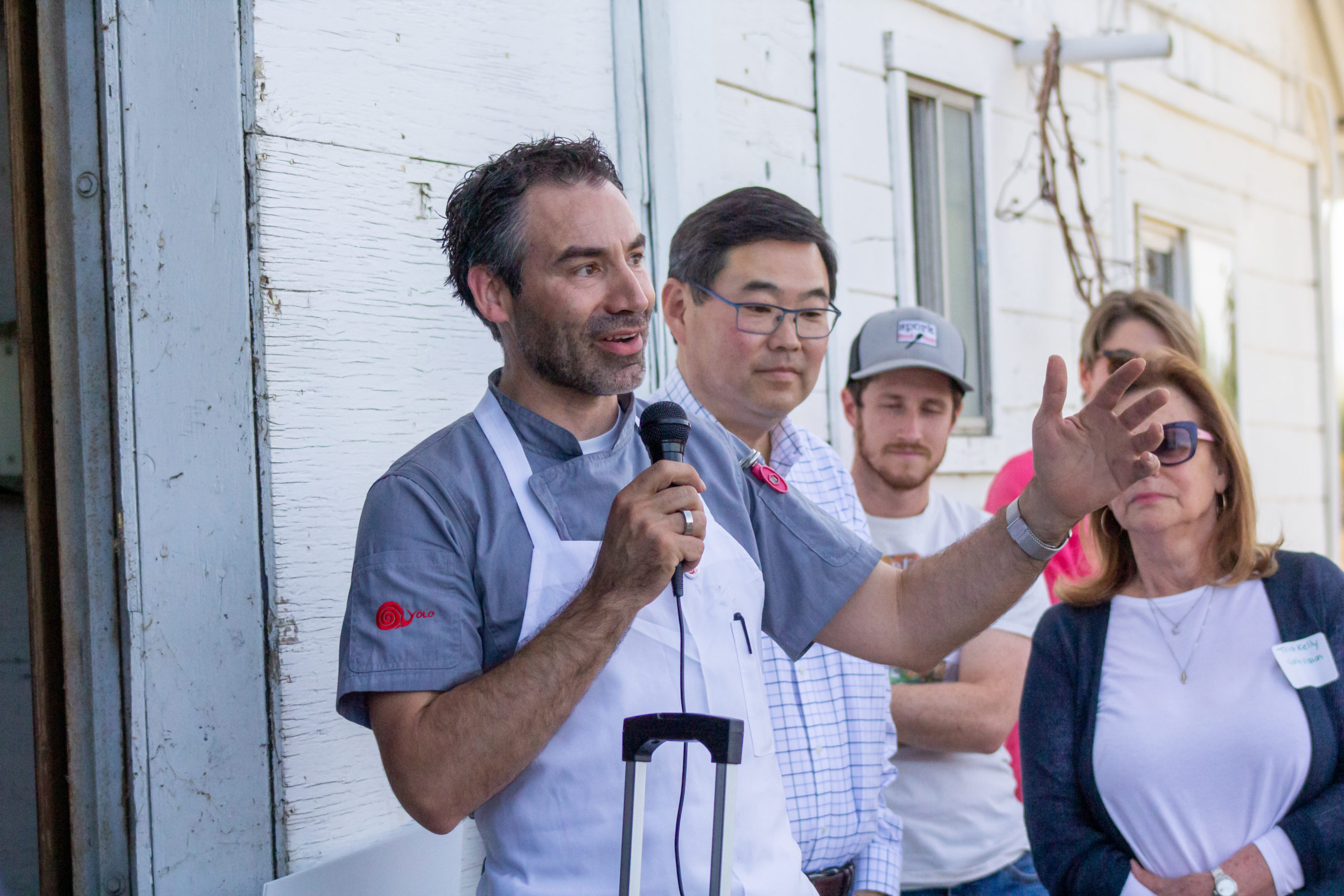
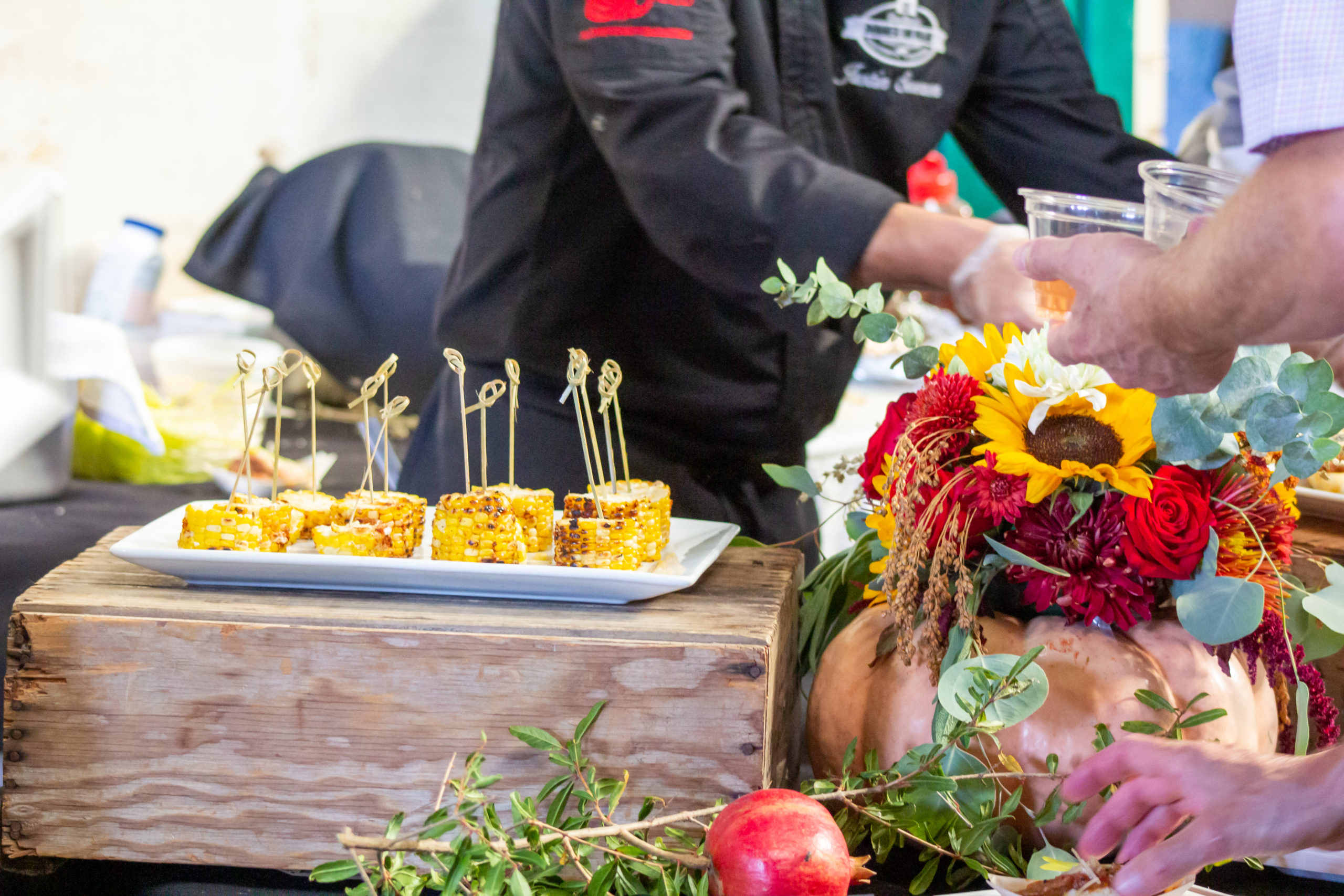

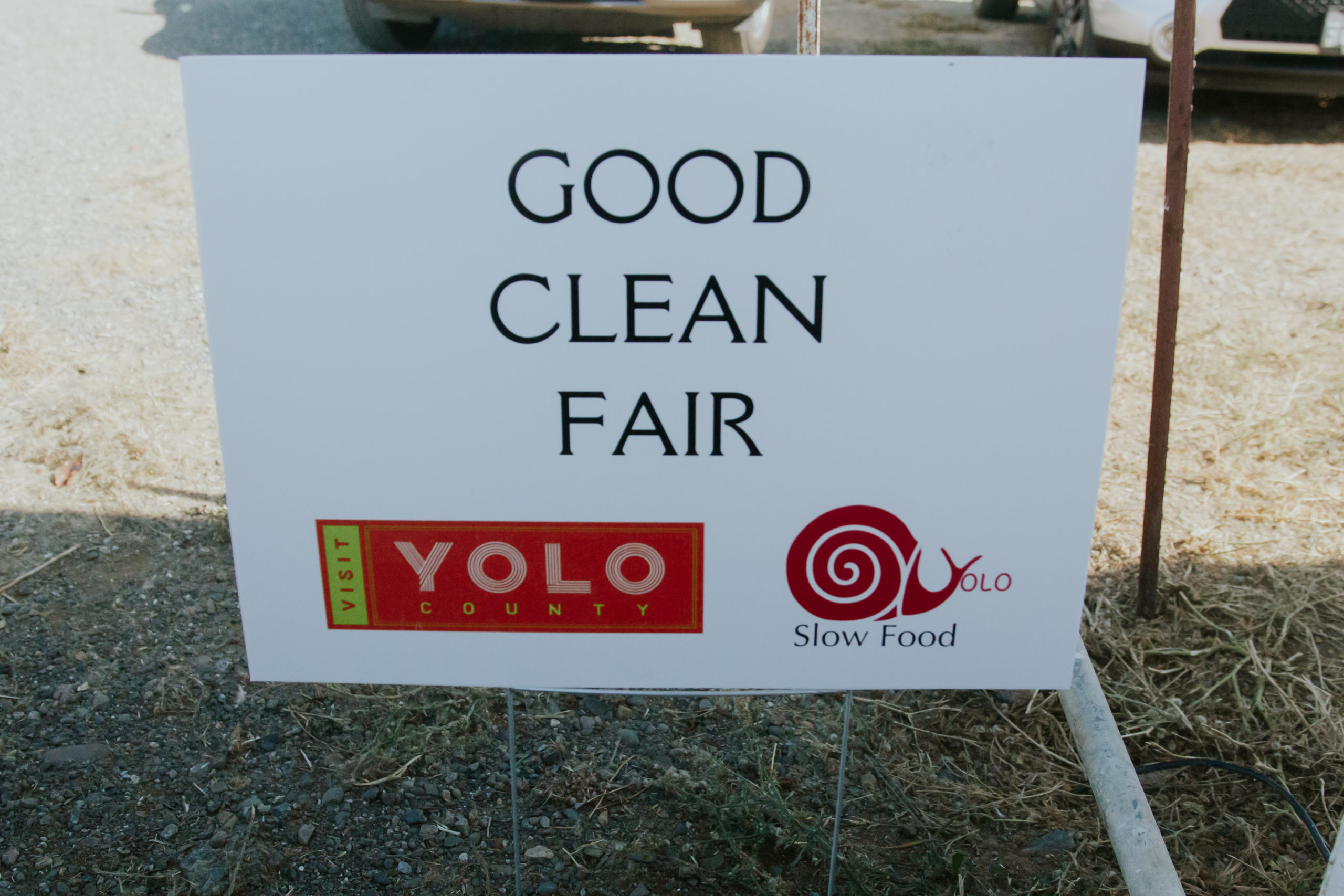
To learn more about the Yolo Food Hub Network, including past webinars and reports, visit: https://www.valleyvision.org/projects/yolo-food-hub.
For questions about Yolo Food Hub Network or if you want to receive future resources and information on the upcoming Food and Agricultural work from Valley Vision, please contact Grace Kaufman at Grace.Kaufman@valleyvision.org to be added to the listerv!
Grace Kaufman is a Valley Vision Project Manager working in the Food and Ag and Clean Economy impact areas
Watch the recap video from the Barn Warming & Celebration below!
Recap: White House Conference – Recommendations from America’s Farm-to-Fork Capital

As part of the We Are Farm-to-Fork initiative, Valley Vision convenes partners and community members to support future investments in the region’s food system.
On Tuesday, August 9th, Valley Vision held our first public, in-person event since the pandemic. The information shared by community partners during the listening session will inform the 2022 White House Conference on Hunger, Nutrition, and Health, which takes place in September. Organized under the banner of our community food system network “We are Farm to Fork,” participants included a vibrant cross-section of more than 75 people at Mulvaney’s B&L, including partners from government agencies, nonprofits, school districts, restaurants, health centers, grocery stores, and more (see Appendix A of the report for a full list of participants). It was an honor to have Maria Gallegos-Herrera, the new USDA Rural Development State Director for California, attend and provide opening remarks, as well as have staff from Congresswoman Doris Matsui and Congressman Ami Bera join us and advance the recommendations.
Using the toolkit provided by the White House Conference planners as a guide for regional input sessions nationally, our discussion focused on the following guiding pillars of the Conference:
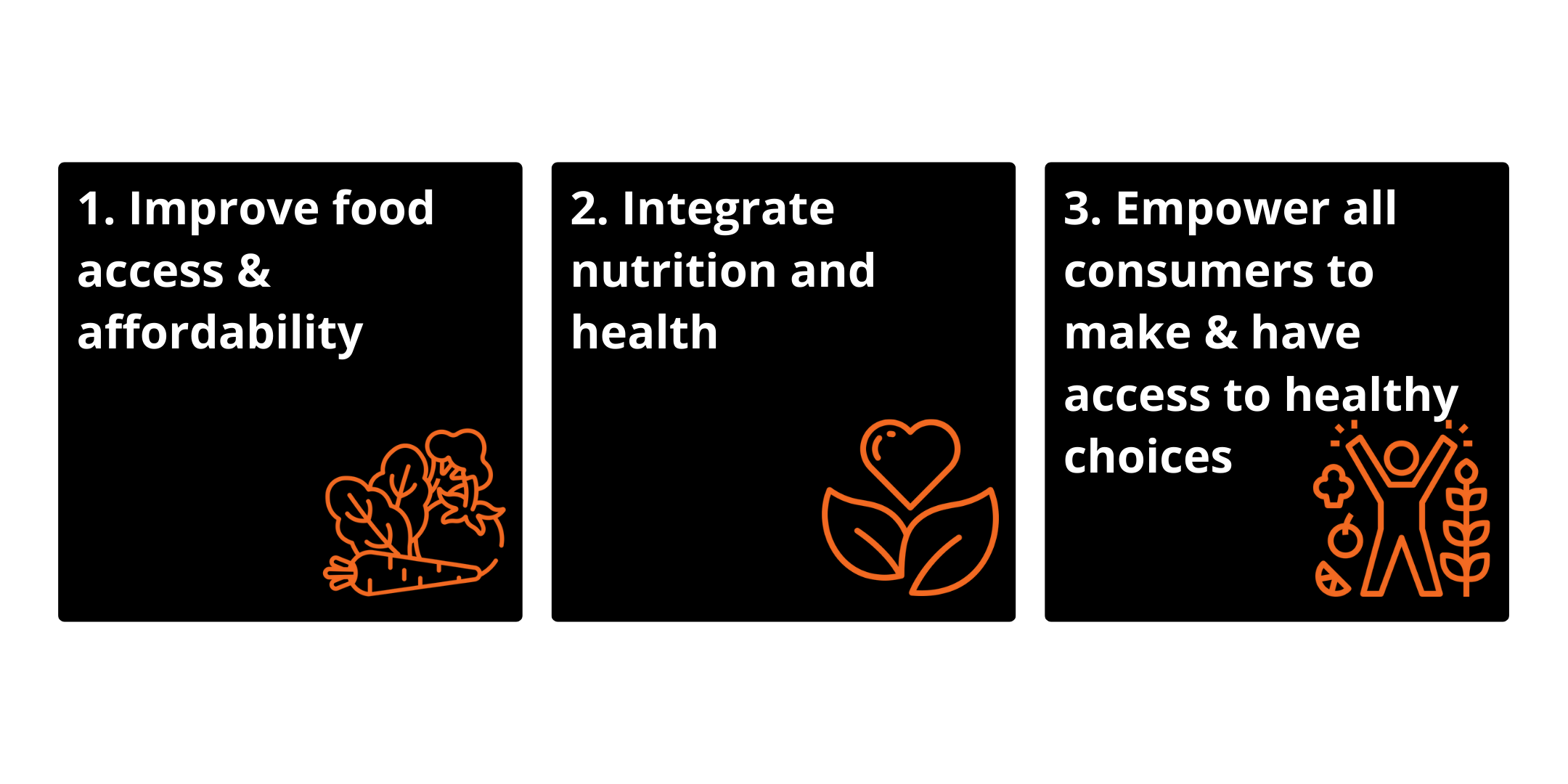
For each of these issues, our event invited input into the following questions provided by the White House Conference planners:
What specific actions should the U.S. Federal government, including the Executive Branch and Congress, take to achieve each pillar? What are the opportunities and barriers to achieving the actions? Actions should include specific policy and/or programmatic ideas and changes as well as funding needs.
What are innovative public- and private-sector activities already happening at the local, state, territory, and Tribal levels that could inform actions at the Federal Level?
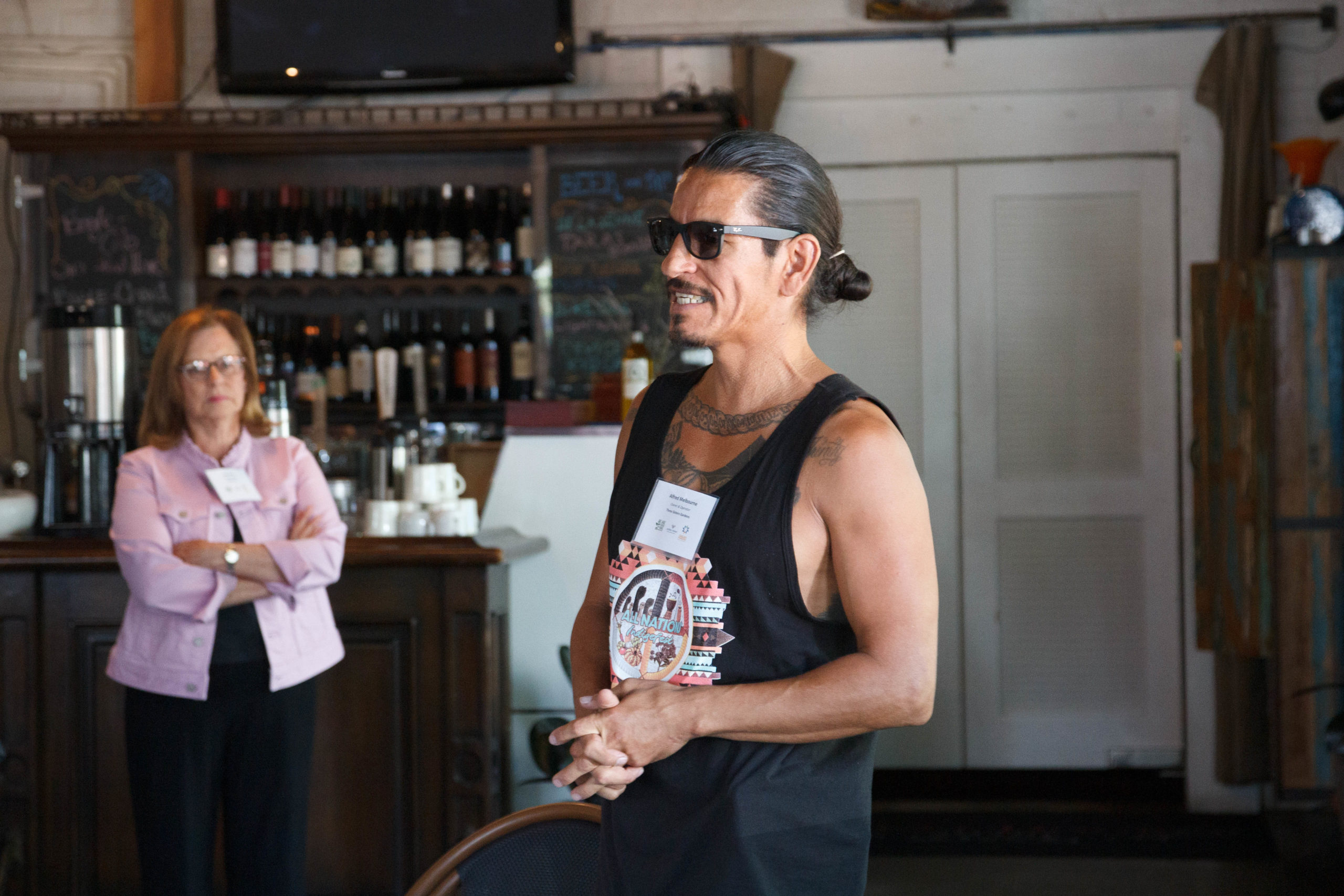
Participants gave feedback online and in-person. During the event, a cross-section of organizations provided lightning-round presentations, highlighting barriers, opportunities, proven models, and recommendations that demonstrated the breadth and diversity of partnerships, the creativity and responsiveness of solutions, and some compelling outcomes to date. These are the foundations of our recommendations to the federal government, which represent the needs and interests of the Sacramento Region. The recommendations range from streamlining specific regulations and providing increased flexibility, to investing in impact models that can be scaled and replicated across the country.
Several clear themes and recommendations were identified in the convening, that if adopted, would greatly facilitate systemic solutions to systemic challenges within our region and across the country. The recommendations reflect the Sacramento region’s partner-driven solutions that were effective in trying to address the rapid increase in food insecurity levels, lack of access to healthy foods, major supply chain gaps, and accelerated job and income loss during the start of the pandemic. Several strong models shared during the event are tangible, tested, and outcome-driven, and are reflected in the recommendations and in the supporting materials.
The recommendations build off the 2021 Sacramento Region Food System Action Plan, developed in Fall 2021 by Valley Vision in partnership with the Sacramento Region Community Foundation. These activities help position the Sacramento region’s future as a global innovator and leader in sustainable agriculture, food, and health.
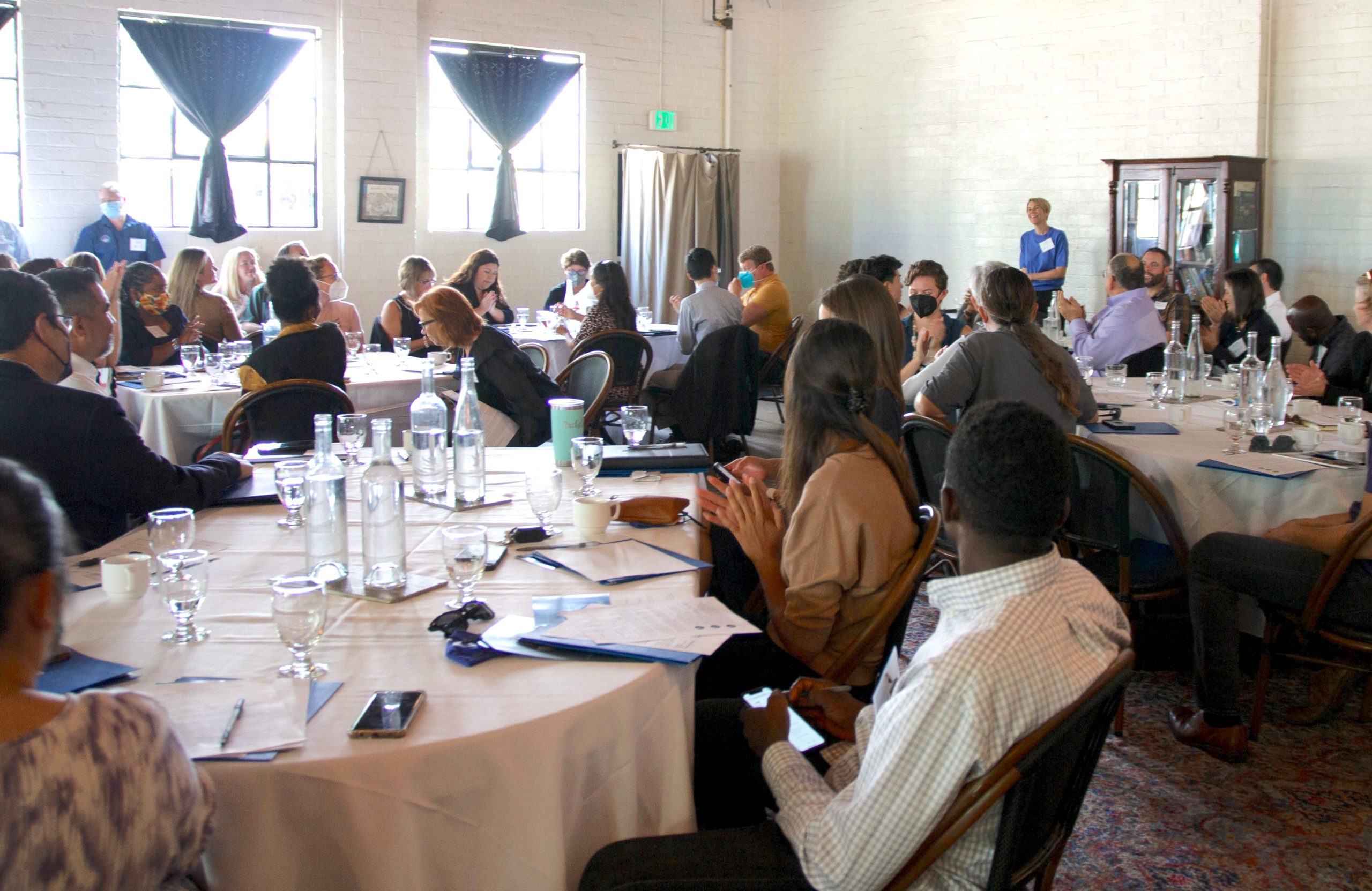
Special thanks to our board members who attended, including Linda Cutler, Shawn Harrison, Chelsea Minor, Clay Nutting, Meghan Phillips, and Lori Rianda. Moving forward, we will incorporate this document into future efforts as we work to reduce food insecurity and strengthen the region’s food system.
To keep up with Valley Vision’s Food and Agriculture work to advance livability in the Sacramento region, email Grace.Kaufman@valleyvision.org to be added to the listserv!
Grace Kaufman is a Valley Vision Project Manager working in the Food and Ag and Clean Economy impact areas
New Project to Advance Yolo Food Hub
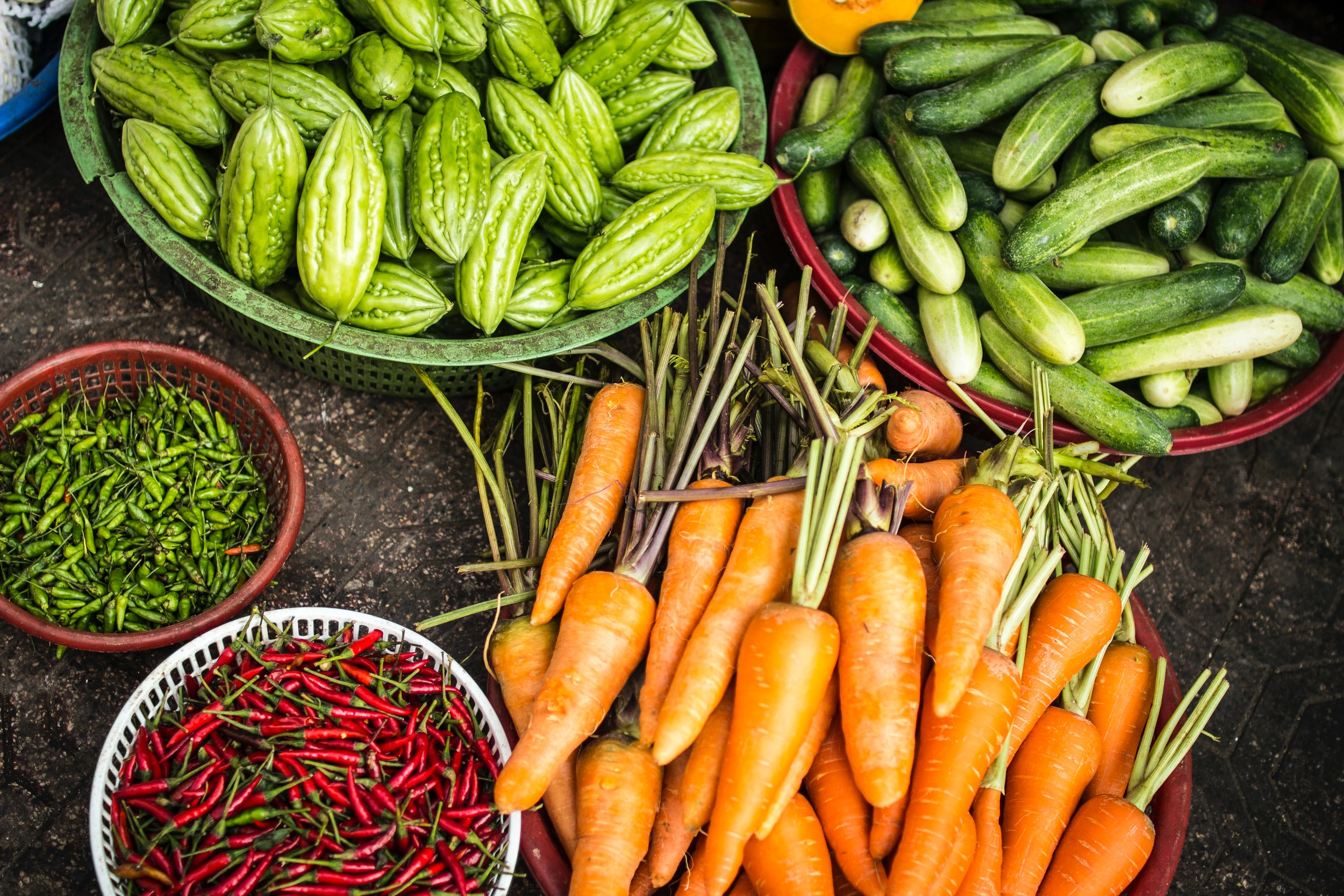
Developing the Yolo Food Hub will strengthen local farms, improve healthy food access, and provide a healthier food and farming ecosystem throughout the Greater Sacramento Region.
Valley Vision, on behalf of several local partners, has been awarded a grant from the US Department of Agriculture’s Local Food Promotion Program (LFPP) to support the establishment of the Yolo Food Hub.
Yolo Food Hub is a new facility that will aggregate, process, store, and distribute farm produce grown in Yolo County and surrounding areas on behalf of farmers in the area. Located in Esparto, Yolo Food Hub will expand food production and distribution channels in Yolo County and the Greater Sacramento Region, while at the same time improving healthy food access, stabilizing food markets, increasing employment and job training opportunities, and providing pandemic relief for farmers.
“Yolo Food Hub will help establish a more diverse and equitable food system – one that allows small and mid-size producers to sell fresh, nutritious food more affordably to schools, institutions and agencies, and to swiftly and efficiently donate oversupplies to lower-income and precariously-employed consumers.” – Dr. Maria McVarish, Esparto Community Member
Food hubs help connect farmers and food entrepreneurs with regional markets and institutional buyers, such as schools, hospitals, and food banks to access source-identified, locally grown products. The funds from this LFPP grant will be used to generate recommendations and a funding strategy to establish and sustain the new Yolo Food Hub. As part of the grant, farmers will receive training on how to reach institutional buyers, such as schools, hospitals, and restaurants, which will buy produce and goods from Yolo Food Hub.
Yolo Food Hub is one of the priority recommendations of the 2021 Sacramento Region Food System Action Plan-which is to build a network of food hubs to connect farmers to markets and increase institutional procurement. The Yolo Food Hub builds upon the 2014 food hub feasibility analysis conducted by SACOG through the Rural-Urban Connections Strategy (RUCS). Yolo Food Hub will support several other food hubs in the region, including Spork Food Hub and the Capay Valley Farm Shop.
“The creation of the Yolo Food Hub creates opportunities for farmers to connect to a broader array of local markets. The Spork Food Hub brings long-standing relationships with local school districts and the opportunity for students to receive the best quality produce the region can supply. By working together, we can strengthen the resiliency of the regional food system.” – Spork Food Hub
In addition, the new Yolo Food Hub will support a regional network of organizations by providing logistical support in aggregation, value-added processing, storage, and distribution services. By providing a variety of value-creating services, Yolo Food Hub will enable farmers to concentrate on growing food for targeted markets, strengthening operations, and scaling their operations.
“Expanding the market reach for agricultural producers and increasing the collaborative efforts of the Yolo Food Hub project partners is ripely timed and exciting. Capay Valley Farm Shop has been operating as a farmer and community-owned food hub since 2007 and is committed to bringing our expertise and enthusiasm to the Yolo Food Hub.” – Tracy Harding, Capay Valley Farm Shop
The cost of developing Yolo Food Hub is estimated at $10 million, $2 million of which has been committed by Yolo County for site acquisition. The Yolo Food Hub project team includes: New Season Community Development Corporation (NSCDC), Capay Valley Farm Shop (CVFS), Yolo Food Bank, Durst Organic Growers, Spork Food Hub, Hatamiya Group, Kitchen Table Advisors, and Valley Vision as the project manager.
For questions about Yolo Food Hub or how to get involved, please contact Grace Kaufman at Grace.Kaufman@ValleyVision.org.
Our Federal Policy “Asks” for a Resilient Food System
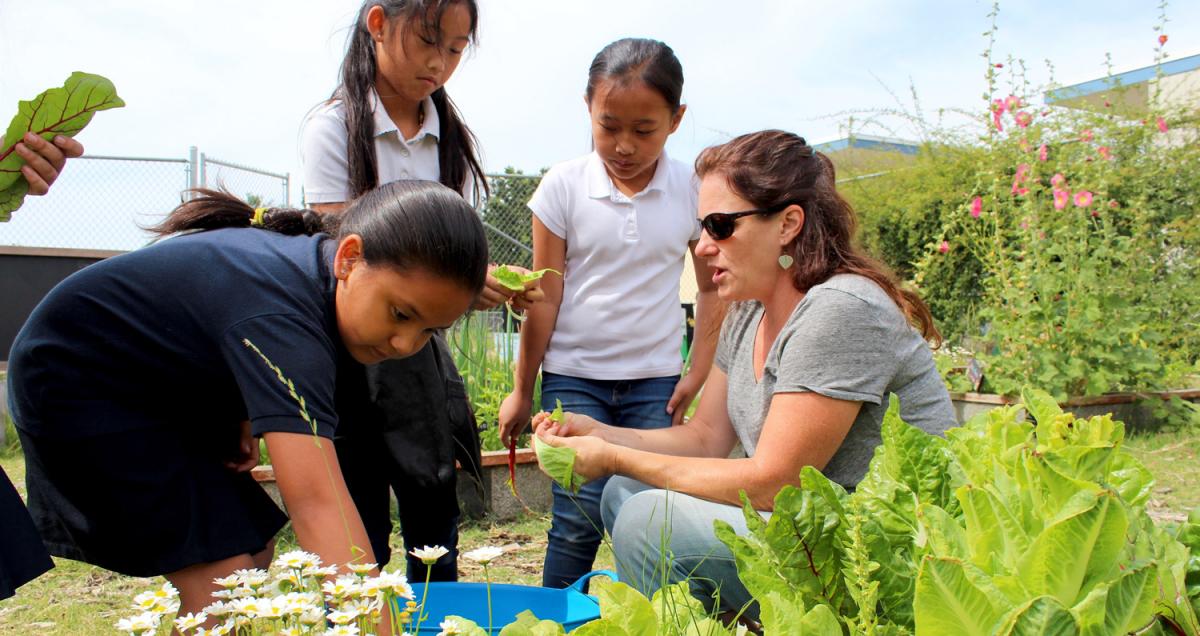
The small but mighty 2021 Food and Ag Cap-to-Cap Team is back prepping for the Metro Chamber’s annual regional advocacy program, which will be held virtually during the last week of October. As America’s Farm-to-Fork Capital, the Team strives to elevate the importance of the $12 billion+ food and agriculture economic cluster, highlighting innovations and initiatives across our food system, and leveraging federal policies, programs and investments.
After the Spring 2020 Cap-to-Cap visit was postponed last year due to the COVID-19 pandemic, the team continued to work with regional, state and federal partners on issues that have even more urgency than before – strengthening the resiliency of the regional food system, and ensuring a strong workforce. Our third big issue – broadband connectivity, access and adoption, which focused on supporting our rural economies and driving adoption of agri-food technologies – has broadened to a high overall regional priority, given all the impacts from the pandemic. We’re grateful to the Cap-to-Cap Economic Development Team for taking on this issue, linking to it as one of the region’s key infrastructure strategies.
To strengthen the region’s resilience, one Cap-to-Cap priority is to target institutional procurement policy changes that will expand local purchasing and supply chains and support local growers, food processors, distributors, and more. We are seeking increased flexibility in the USDA National School Lunch Program’s procurement regulations so local school districts can receive Cash in Lieu of Commodities – meaning school districts can use funds to purchase local goods instead of having to obtain food products from outside the state. This is a true Farm-to-School approach. As we have for many years, we continue to support the development of food system infrastructure such as food hubs, central kitchens at schools, and other facilities and equipment to increase opportunities for farm-to-institution procurement, including for hospitals. We have excellent examples of local procurement initiatives such as with Sacramento City Unified School District’s Nutrition Services and UC Davis Health system that have greatly expanded local purchasing, supporting the local economy and also delivering more than 65,000 fresh and healthy meals daily prepared by our local chefs. We also have a goal to address SNAP eligibility requirements for food insecure college students across the region.
Our other Cap-to-Cap priority is supporting the food and ag cluster’s workforce. Pre-COVID, there was already a skills gap and a pipeline gap across the economic cluster. With the average farmer being 57.5 years of years of age and the average skilled manufacturing (food processing) worker being 55 years of age, we now face a new challenge of worker retention, along with increased demand for digital and agri-tech skills across the entire industry. And of course, we want to ensure that our farmworkers and other front-line workers who kept the regional food system and supply chain going – through health crises and climate challenges, to ensure safe and healthy food for all of us – have safe working conditions and opportunities for income mobility. The Team supports increased federal investments in the Workforce Innovation and Opportunity Act, including for training, industry partnerships, and apprenticeships among others, to reskill, upskill, retain, recruit and grow the next generation of farmers, food entrepreneurs and food system workers. We also support legislation to provides certified agricultural workers with a path to help achieve earned legal status.
The Cap to Cap team is led by Honey Agency, Sacramento City Unified School District Nutrition Services, Valley Vision and Wilson Vineyards. Valley Vision is excited that this year’s program also will benefit from the update of the Food System Action Plan from 2015, prepared in partnership with the Sacramento Region Community Foundation, and the new Food System Resilience Poll, conducted in partnership with Sacramento State Institute for Social Research. These linked reports will be released in early October, giving us new insights for our food system. It will help drive the success of our Greater Sacramento Region Prosperity Strategy, in which food and agriculture is one of our three competitive advantage clusters. We’re also excited that Cap-to-Cap will provide the opportunity to work with our supportive Congressional delegation and new leaders at USDA and other agencies who hail from the region. Please join us to lend your voice and expertise to our food and ag mission!
To continue staying up to date with efforts to strengthen our regional food system, subscribe to Valley Vision’s Food for Thought email newsletter!
Trish Kelly is Valley Vision’s Managing Director, leading its food, agriculture, workforce, and broadband initiatives.
Recap: Challenges and Opportunities in Our Region’s Food System
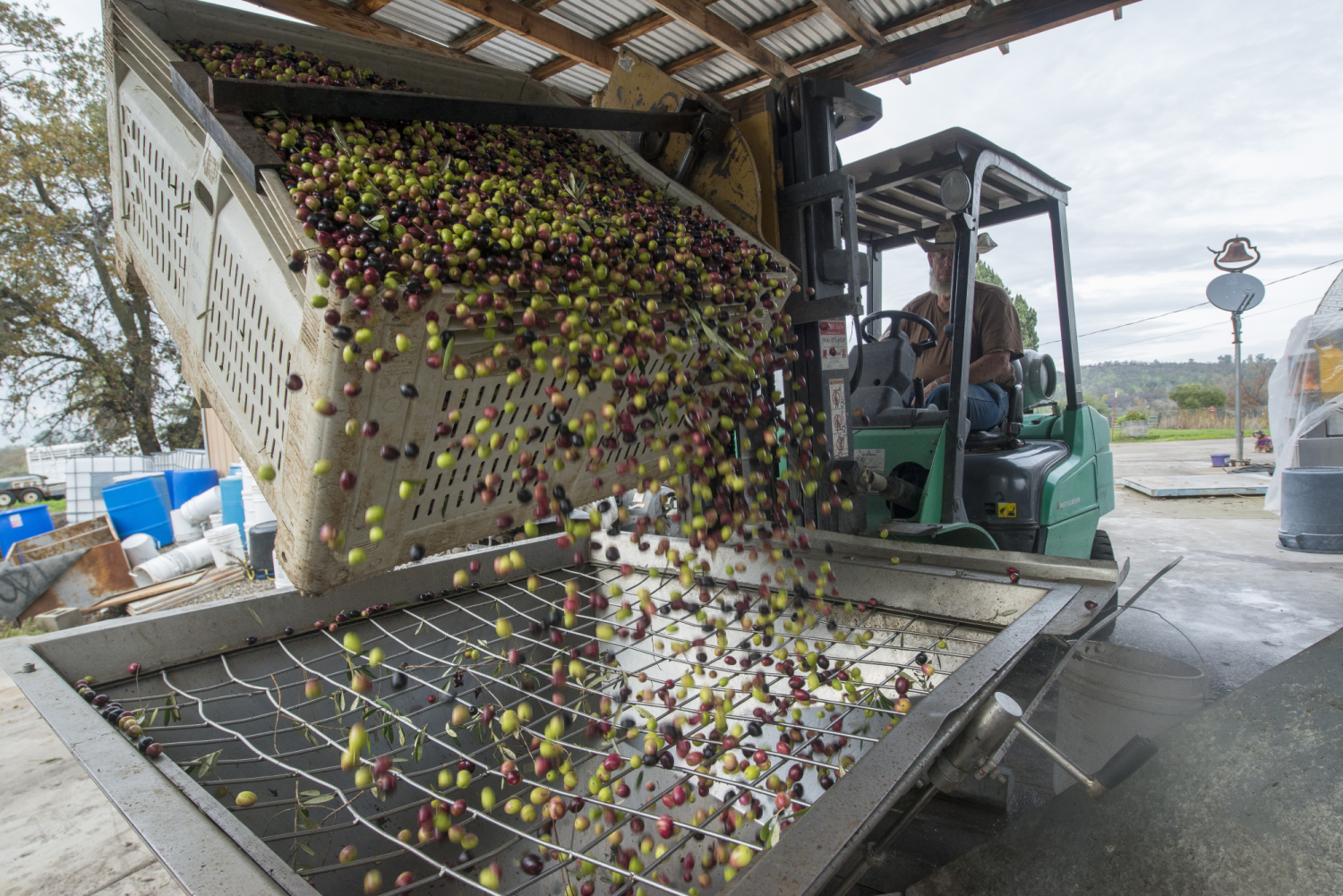
Valley Vision is proud to be researching and working alongside partners to support investment in the region’s food system.
Last month, as part of the 2021 Food System Action Plan update, Valley Vision hosted a series of Listening Sessions in topical areas as an opportunity to identify funding, capacity, and resource needs in the region’s Food System. We were joined by almost 200 participants who shared their expertise in workforce development and career pathways; viability of agriculture and land preservation; environmental sustainability and climate change; health and nutrition education; healthy food access and food security; and food economy and local market development.
Supported by the Sacramento Region Community Foundation, the 2021 Food System Action Plan (FSAP) is a regional food system investment strategy that will identify best practices, priorities, prevailing challenges, opportunities, and funding recommendations related to the region’s food system for the communities of El Dorado, Placer, Sacramento, and Yolo Counties. The goal is to increase the vitality of the region’s food system and to identify financing strategies and mechanisms to support a more equitable, health-promoting and accessible food system for all residents of the Greater Sacramento Region. The report will be released this Fall, and excitingly, for the first time, the report will be paired with a Food System Resilience Poll, in partnership with the Sacramento State Institute for Social Research (ISR) and Capital Public Radio. The poll covers similar topics related to the food system and will inform the Food System Action Plan. Both of these reports are slated to be released in Fall 2021.
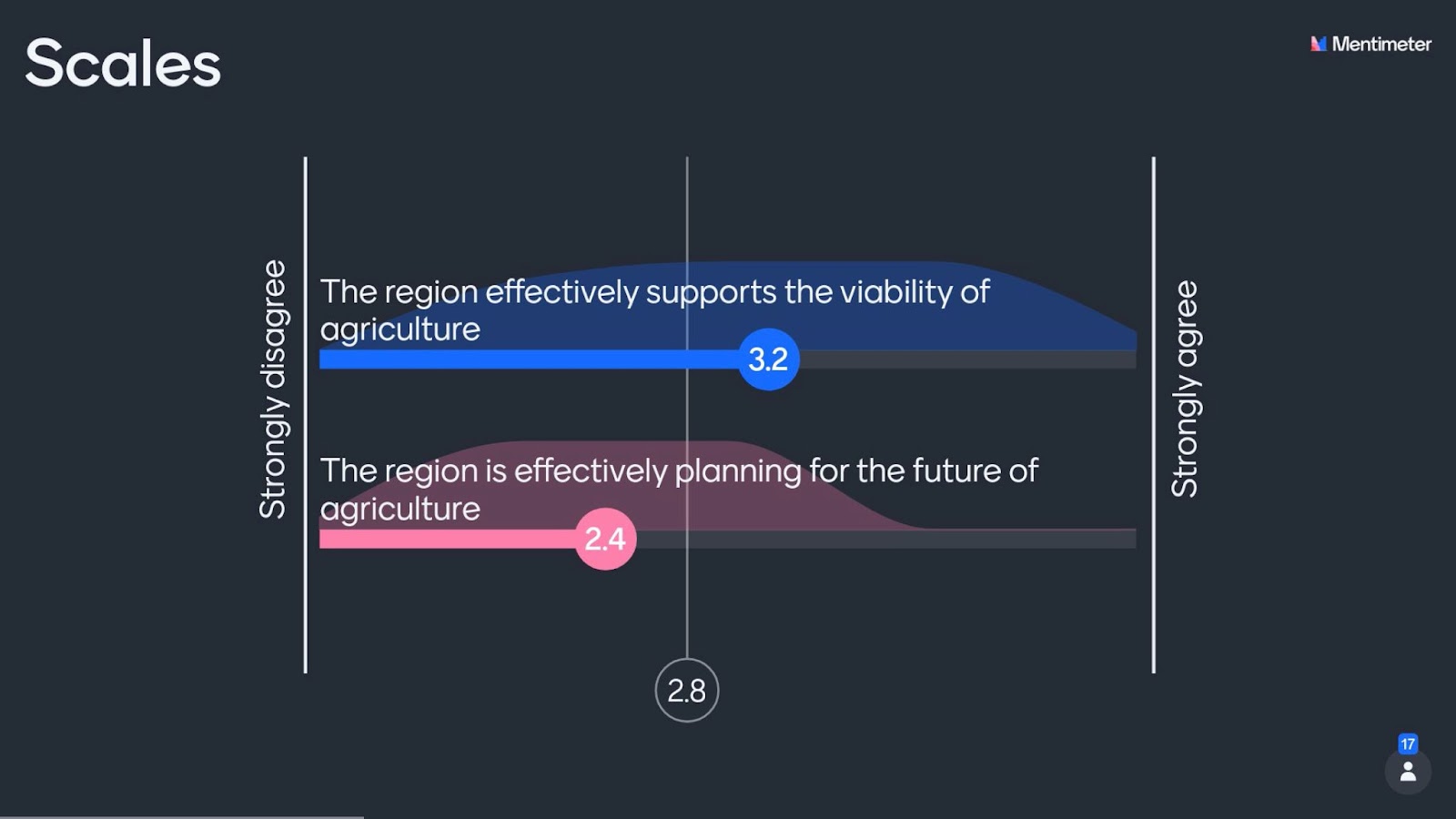
If you weren’t able to attend the listening sessions, below is a brief summary of each session:
- Session #1: The participants in the Careers in Food and Agriculture session discussed the manufacturing, processing, and distribution networks of the food system, illustrating the diversity of farm operations in the region. Although the session reminded us that the region has many successful Career Technical Education (CTE) programs in food and agriculture-which prepare high school students for college – challenges remain in sustaining, building, and retaining a local workforce, including the next generation of farmers and food producers. Lack of awareness of workforce opportunities and less than positive image were also challenges.
- Session #2: Land, capital and broadband access, agriculture technology, local markets, and land preservation were constant themes in the Viability of Agriculture session. Despite land conversion being a threat to agriculture’s viability, our region is doing better than others in the state; however, access to land to start a farm or a community garden remains a challenge. Workforce is another challenge.
- Session #3: During the Environmental Sustainability session, participants discussed local food production, food waste, edible food recovery, and the impacts climate change has had (and will have) on the food system, as is manifesting now. Although food hubs were discussed in some fashion in every session, in this session they were discussed extensively as a mechanism to reduce greenhouse gas emissions associated with transportation of produce and international trade and to provide additional capacity for packaging, processing and distribution of local produce for local consumption.
- Session #4: The Healthy Food Access and Food Security session showcased the strong network of nonprofits in the region, especially those in the emergency food system, who work to provide access to fresh, local, and nutritious food to under-resourced communities. In spite of the increased impact on this sector due to the pandemic, participants shared that consistent and expanded funding for infrastructure, organizational capacity and growth to manage the increased levels of clients and food remains a challenge.
- Session #5: In the Health and Nutrition session, the importance of family-based nutrition education and supply chain awareness was emphasized. A number of participants mentioned that most people are not aware of the correlation between food, health, and eating habits, and that robust educational support is needed to help promote healthy eating and nutrition literacy.
- Session #6: The Food Economy session focused on institutional purchases, entrepreneurship support, and local procurement partnerships. There are a significant number of small farmers in the region, but corporate producers can produce food for a lower price, making local food procurement and local economic development challenging. There are innovative efforts through schools and hospitals that can be models for increased local procurement and purchasing partnerships, support local producers and keep more dollars local.
The listening sessions revealed what most of us already know: As America’s Farm-to-Fork Capital, we have a lot of work to do but we have the infrastructure and the strong networks to do it. If we are organized as a region, we can better promote, support, and partner with one another to bring additional funding to the region. We look forward to sharing additional challenges, opportunities, and funding recommendations in the Fall when we release the 2021 Food System Action Plan.
The full recordings and presentation slides are available on Valley Vision’s website. If you weren’t able to attend the sessions and would like to provide comments for the FSAP, we have created a survey to gather additional input. Please reach out to Grace Kaufman (Grace.Kaufman@valleyvision.org) should you have any questions.
To keep up with Valley Vision’s work to advance livability in the Sacramento region, subscribe to our monthly Food and Ag newsletter!
Grace Kaufman is a Valley Vision Project Manager working in the Food and Ag and Clean Economy impact areas
New Study of Region’s Food System – and Prevailing Gaps – to Launch
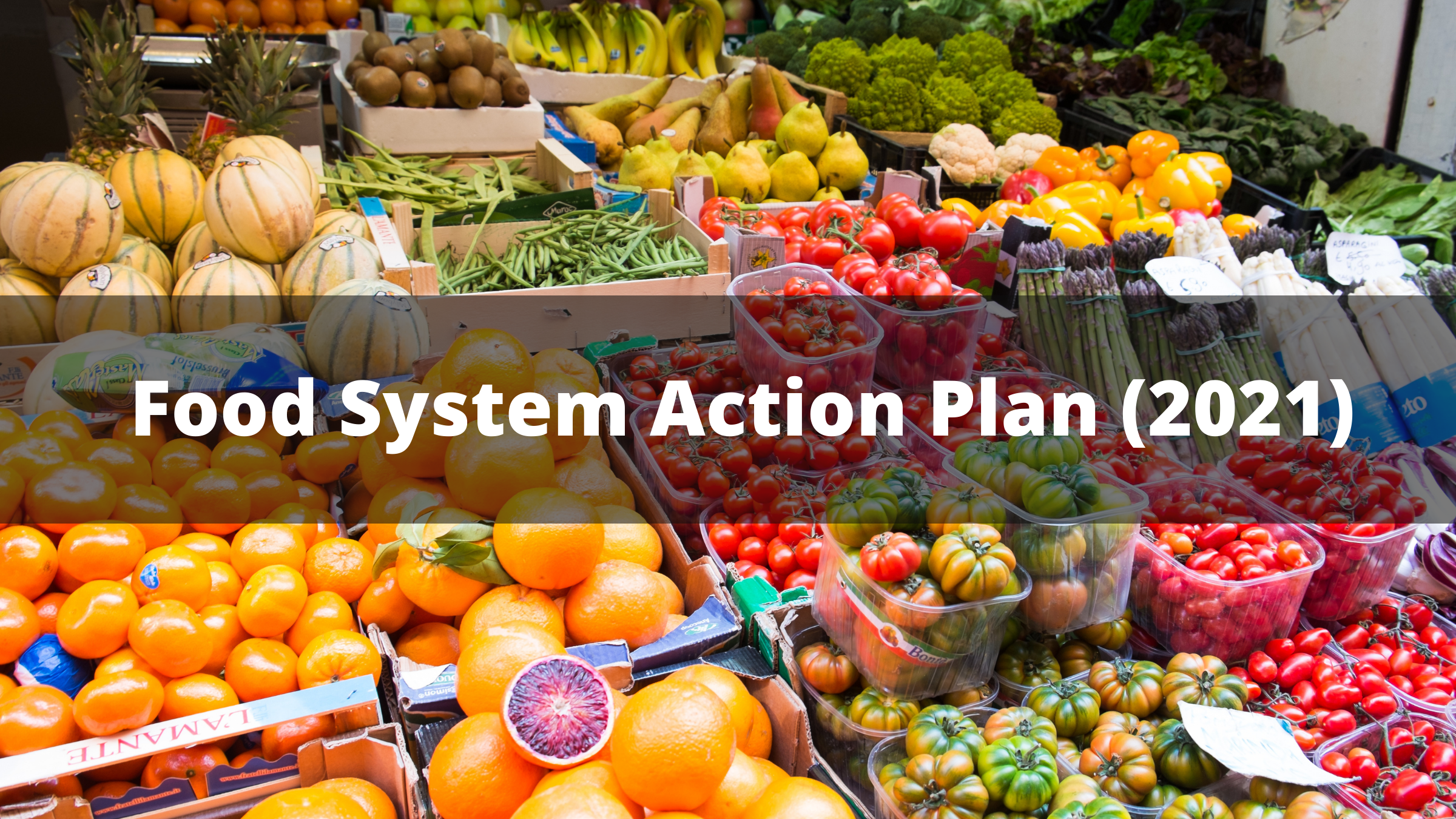
SACRAMENTO, CA – MAY 19, 2021: The Sacramento Region Community Foundation (Foundation) and Valley Vision announced today a new research study being jointly launched on the region’s food economy and prevailing gaps in the greater Sacramento region’s food system. The research will inform recommendations for investment strategies to strengthen the region’s food system capacity and resiliency.
“The region’s food system is dynamic and complex,” said Linda Cutler, CEO of the Sacramento Region Community Foundation. “While the overall food economy has advanced in recent years through dedicated efforts like new job creation, workforce programs, institutional procurement, and food literacy, disparities persist around food access, security, and system capabilities that have been further exacerbated by the COVID-19 pandemic.”
The study will build upon earlier work highlighted in the Sacramento Region Food System Action Plan (FSAP), a seminal study conducted by the Foundation in partnership with Valley Vision in 2015. The FSAP laid the building blocks for a regional roadmap and identified an actionable role for the Foundation that it has worked to implement since.
Valley Vision conducts public opinion polls in partnership with the Institute for Social Research at Sacramento State and will field this new poll in June to collect data on residents’ experiences, perceptions and needs related to accessing food. The Food System poll, in addition to other engagement and data inputs, will provide the Foundation with invaluable information that will be used to update the 2015 FSAP.
“The ultimate goal of this research is to ensure the viability of the food and ag economy at all scales,” said Valley Vision CEO Evan Schmidt. “This includes increasing the amount of locally grown food distributed within the regional food system, increasing access to fresh, affordable produce, especially in underserved communities, and increasing consumption of healthy foods through access to nutrition education.”
The research findings will support meaningful collaborations among food system partners and improve alignment of system activities and investments. Findings will also help identify compelling short- and longer- term priorities and establish a baseline for future progress.
“This is incredibly important work for our region,” said Kate Stille, Sacramento Region Community Foundation Board Chair and Chief Impact Officer for Nugget Markets, Inc. “We can point to real and tangible results born out of the 2015 FSAP, which has dramatically improved food security in underserved communities by strengthening the emergency food distribution network.” The 2015 FSAP inspired a partnership between the Foundation and Sacramento Food Bank & Family Services to form the Neighborhood Food Access Networks, which today serve hundreds of thousands of people by networking together more than 200 emergency food distributors across Sacramento neighborhoods.
The work to strengthen the food system is all-the-more critical given the COVID-19 pandemic, which greatly impacted health and economic disparities in the local community. High unemployment has increased the level of need for food. Local food banks, schools, restaurants, and many others have created new distribution mechanisms to respond to the crisis. The FSAP is a blueprint for action that will help shape these types of strategic initiatives, as well as to inform local leaders and the community on how to engage in meaningful solutions and catalyze investments in our vital food system.
“A systems approach centered on equity is needed,” said Schmidt. “Understanding food access and security issues is paramount to ensuring a health-promoting and accessible food system that can serve the needs of those who live in the region as well as those who benefit from our rich agricultural valley nationally and globally.”
The public opinion poll will go into the field in June and findings are expected to be published in September.
###
About the Sacramento Region Food System Action Plan (FSAP): FSAP was a seminal study conducted by the Foundation in partnership with Valley Vision in 2015 and provided a common framework along with integrated goals, strategic priorities, and recommended actions to strengthen the food system for the region. Intended to serve as a roadmap for food system development, function, and investment, the FSAP identified several disconnects in the food system, including the gaps between great food abundance and a vibrant economic sector, high levels of food insecurity, poor food-related health outcomes, and missed opportunities for local food sourcing and markets.
About the Sacramento Region Community Foundation: For over 35 years, the Sacramento Region Community Foundation has been the capital area’s trusted steward of charitable assets and champion for impactful philanthropy. The Foundation’s mission is to transform the capital area through focused leadership and advocacy that inspire partnerships and expand giving.
About Valley Vision: For more than 25 years Valley Vision has used research to help governments, businesses, foundations and community groups better understand the issues facing our region. We believe that knowing and understanding the facts is the best way to establish a common working foundation for collaborative problem-solving. That’s why Valley Vision conducts, produces and interprets research including scientific public opinion polls, focus groups, community needs assessments, best practice studies and other research tools to bring to light the information local leaders need to improve our communities.
“This Is Not Goodbye, But Thank You”
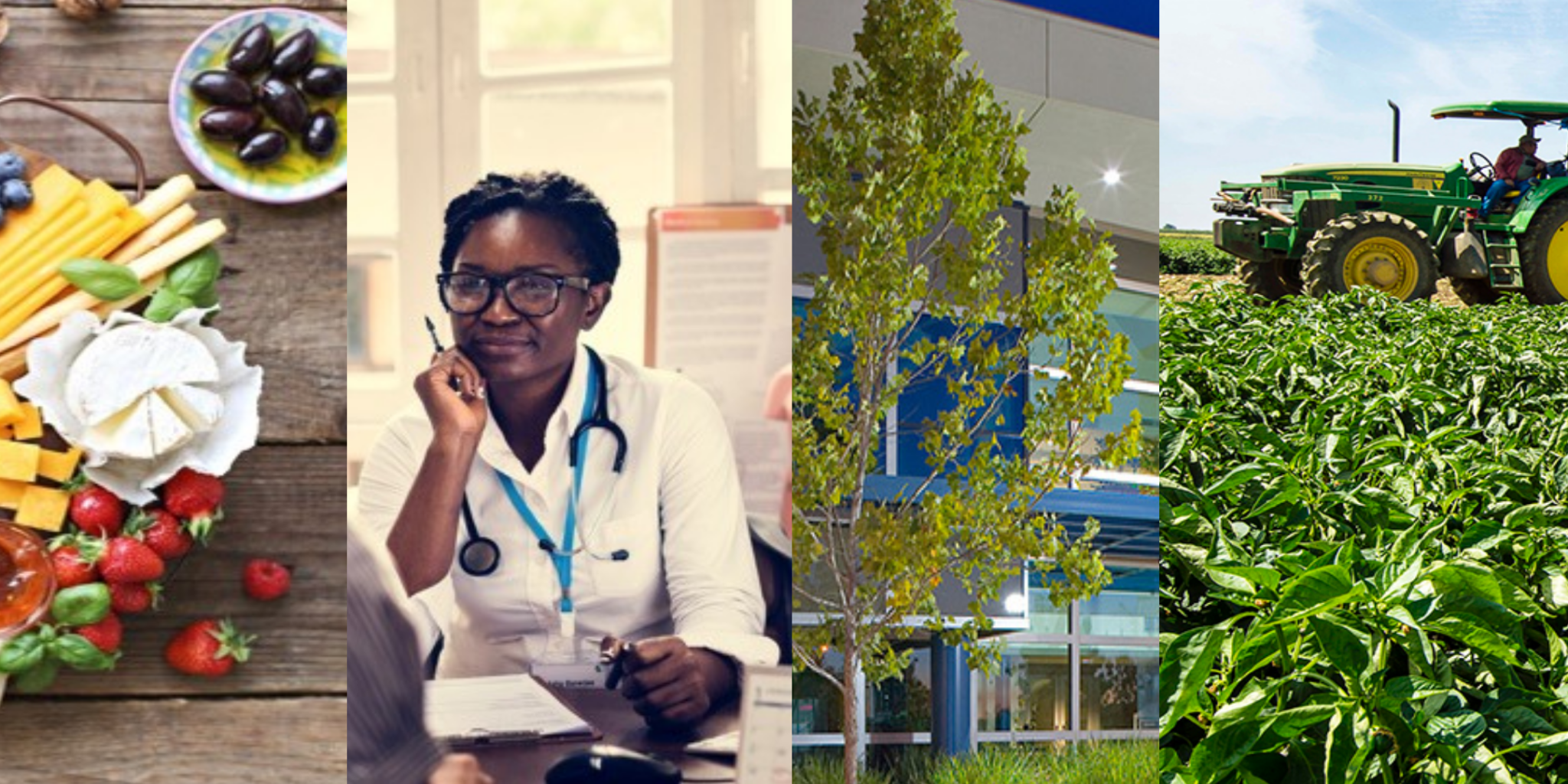
Being a part of Valley Vision was a turning point in my career. I have waded through non-profit jobs for most of my professional life, picking up different roles every year, finding new ways to expand my skills, but nothing ever felt “right.” After graduating from college, like many young adults, the degree that I spent so many years working to achieve, I thought, was a ticket to that “grown-up job.” The problem was, I had no idea what I wanted to do or what I was genuinely passionate about pursuing. I had spent so much time working to finish my education, I forgot to plan for the rest of my post-academic life.
As I floated in and out of the professional world, I juggled my interest in food systems, agriculture, and community development, trying to find ways to apply all this information I had in my brain to constructive use. I dabbled in the restaurant industry, farmer’s markets, marketing, event planning, university institutions, but nothing seemed to ever fit. Finding Valley Vision was like finding the light at the end of very long tunnel. This was an organization that had not just a fantastic reputation in civic engagement – and food systems – but had a leadership interested in developing and engaging with young professionals. I finally was in a space where I was treated as a qualified individual, and not as a nuisance, but a respected colleague.
Over the last three years, I was given opportunities far beyond what I ever expected, from managing the Farm to Fork Steering Committee to producing conferences like Future Focus to planning and organizing Valley Vision’s 25th Anniversary event. I engaged with regional and national leadership, developed real genuine relationships, had a voice at the table to help solve critical issues, helped provide solutions to issues I was passionate about, and learned about challenges facing communities not just here in the region, but throughout California.
I do not consider my departure from Valley Vision an ending. That is not the Valley Vision Way. Not only will the professional education I was afforded be long lasting, but the relationships built among my mentors and colleagues will be for a lifetime. I probably can never express how much appreciation I have for my time at Valley Vision, but I know that it is because of Valley Vision, its employees, its mission, and culture, that I have the confidence to move forward into this next chapter.
Emma Koefoed was a Valley Vision Project Manager staffing the Food & Agriculture Impact Area and leading Valley Vision event planning from 2017 until the end of 2020. She is the new Manager of Communications & Marketing at the SMUD Museum of Science & Curiosity.
A Crash Course in Community-Building
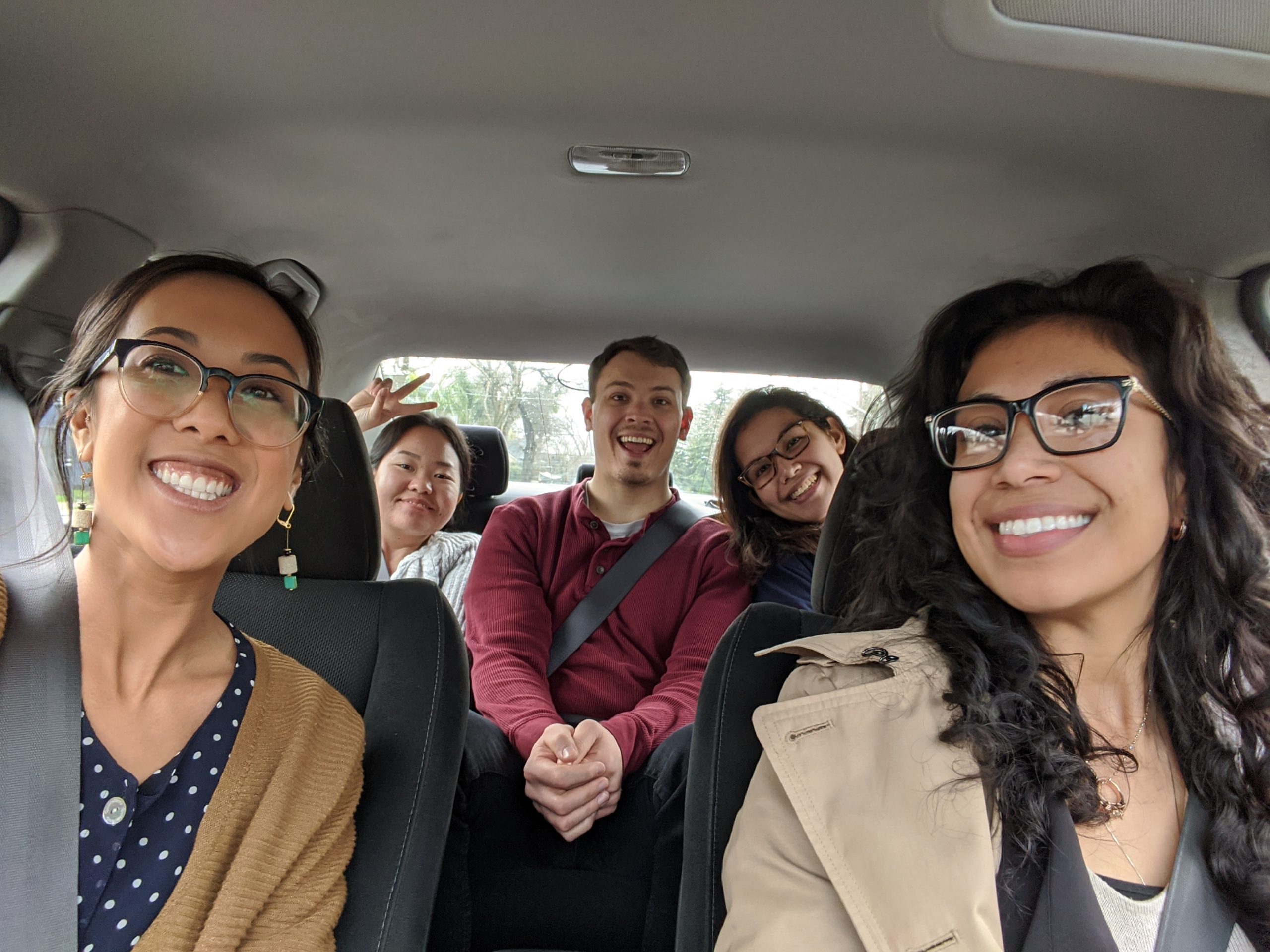
I moved to Sacramento in 2012 with every intention of building a career for myself that focused on helping people. As a Filipina-American I initially thought that my service would be through nursing, but my love of science couldn’t change my disposition in hospitals. I had a limited perspective of what service for my community meant, but Sacramento State taught me the importance of mentorship; Food Literacy Center exposed me to community development and Sacramento’s strong nonprofit system; and Valley Vision gave me the background and foresight to envision a better community across all systems.
Valley Vision has broadened my perspective and taught me that helping people takes more than single-handed transactional services. It requires collaboration, patience, and trust – all easily stated, but not so easily achieved. Yet this small, but mighty team takes on that task wholeheartedly! Valley Vision brings together workforce, education, employers and partners to align workforce initiatives; guide digital inclusion and broadband initiatives to connect our communities; and lift the voices of people throughout our region by advancing public opinion polling data. My experience at Valley Vision was a crash course in the expansive and unique systems that make up our community, exposing me to incredible organizations and populations that make Sacramento home to so many. Content expertise alone though is not enough to ensure collaboration or trust among these entities. In turn, Valley Vision is filled with devoted, adaptive, and compassionate individuals.
I am forever grateful to have learned from and worked alongside this team. It has been an honor working on our workforce and broadband initiatives and my experience at Valley Vision has helped guide my path towards education. I am looking forward to advocating for digital inclusion in a new capacity as a teaching assistant, and later teacher, integrating what I have learned from Valley Vision’s future of work and regional digital skills initiatives into the classroom.
Yzabelle Dela Cruz was a Valley Vision Project Associate supporting the 21st Century Workforce, Innovation & Infrastructure, and Food & Agriculture impact areas.